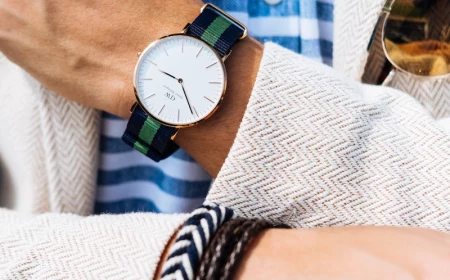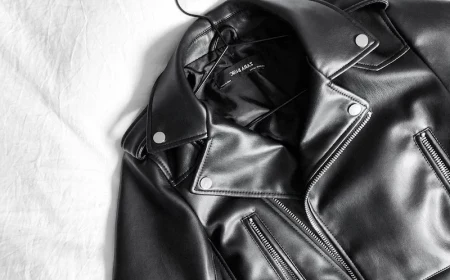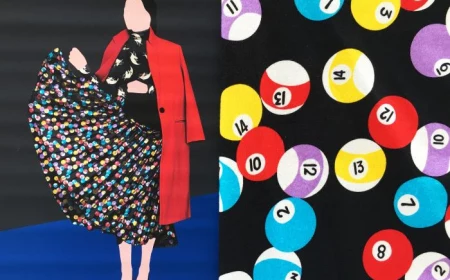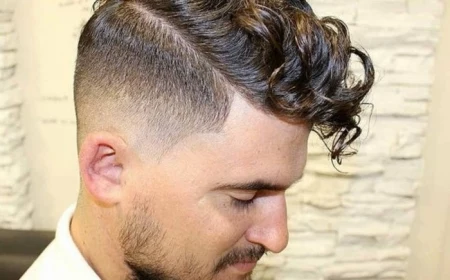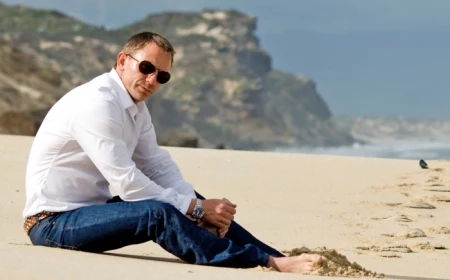How to Get a Haircut You Actually Love (A Barber’s Inside Guide)
After more than two decades behind the chair, with shears and clippers in hand, I’ve learned one simple truth. A truly great haircut has almost nothing to do with the latest trend you saw on social media. It’s all about a simple, powerful partnership between you, your barber, and three key things: your face shape, your hair type, and your lifestyle.
In this article
When a new client sits down, that first conversation is everything. It’s a consultation. I’m not just glancing at your hair; I’m looking at your head shape, how your hair wants to grow, and I’m listening. A style that demands a ton of product and a blow dryer just isn’t going to fly for a guy who hits the gym at 5 AM. My goal has always been the same: give you a haircut that looks amazing walking out the door and, more importantly, one you can actually manage yourself three weeks later. This guide is pretty much everything I’ve learned about how to make that happen.
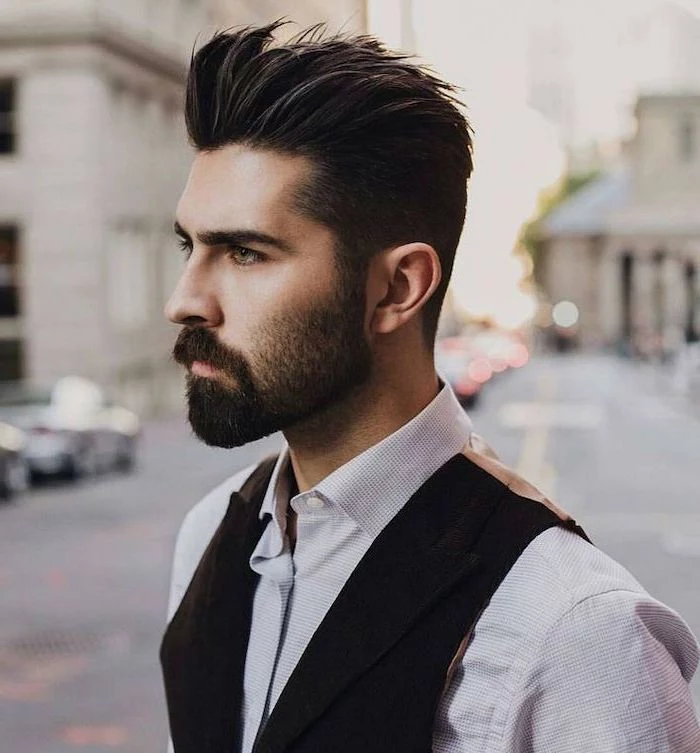
First Things First: Know Your Hair’s Personality
Before we even dream about specific styles, we have to know what we’re working with. People throw around words like ‘thick’ or ‘thin,’ but in the shop, we get a bit more granular. Knowing these details helps us predict how your hair is going to behave. Honestly, it’s the science behind the art.
Hair Texture: Fine, Medium, or Coarse?
Texture is all about how thick each individual strand of hair is. To figure yours out, just take one strand between your thumb and index finger. Can you barely feel it? That’s fine hair. If it feels like a normal piece of sewing thread, it’s medium. And if it feels like a stiff bit of wire or fishing line, you’ve got coarse hair.
- Fine Hair: This stuff can be super soft, but it often falls flat and can get oily pretty fast. A common mistake is over-texturizing it with thinning shears, which just makes the ends look weak. We usually prefer blunt cuts to create a stronger, thicker-looking edge.
- Medium Hair: This is the sweet spot. It’s the most common texture and it’s incredibly versatile. It holds styles well, from slick pompadours to messy, textured looks, without being too heavy.
- Coarse Hair: These strands are wide, strong, and have fantastic natural volume. The downside? They can be prone to frizz and feel dry because it’s harder for your scalp’s natural oils to travel down the shaft. For my clients with coarse hair, moisture is everything. A good leave-in conditioner is a game-changer. You can find excellent ones for between $15 and $25 at salons or online, and they make a world of difference.
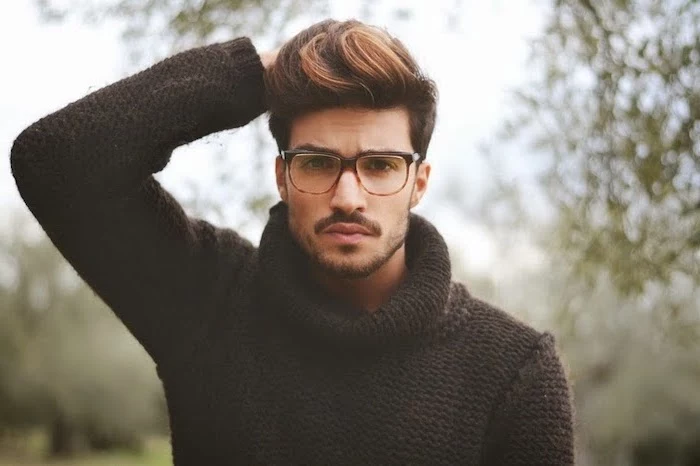
Hair Density: How Crowded Is Your Scalp?
Density is simply how many hair strands you have packed into each square inch. It’s totally separate from texture. You can have fine hair with high density (which looks thick) or coarse hair with low density (where you might see more scalp).
- High Density: You have a ton of hair. The challenge here is to remove weight so it doesn’t turn into a helmet. We use techniques like point cutting to create movement. A skin fade looks incredibly sharp on high-density hair because the contrast is so clean.
- Low Density: The goal here is to create the illusion of fullness. Shorter, textured styles are your friend. A classic crew cut or a French crop can make the hair on top look way more substantial. A quick tip: avoid shiny, wet-look gels. They can clump hair together and show more scalp. Matte pastes and clays are much better because they absorb light and create a thicker appearance.
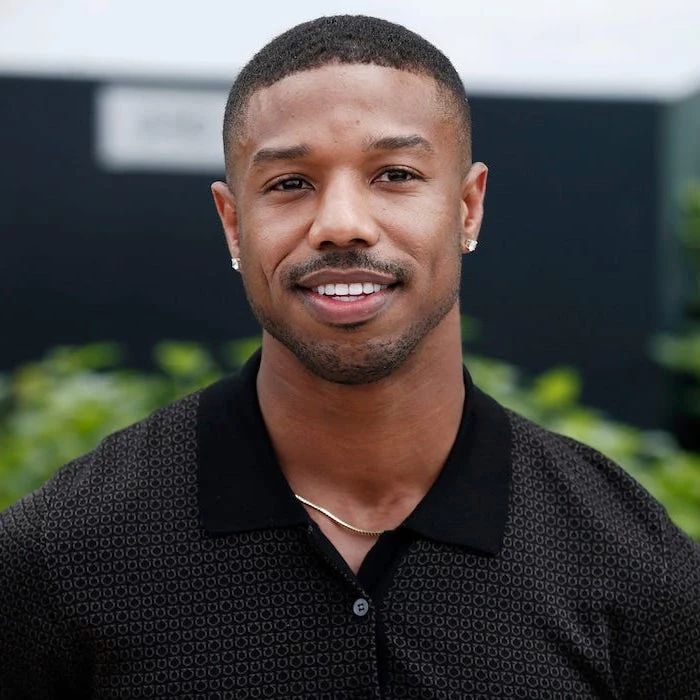
Cowlicks and Other Quirks
Your hair doesn’t just grow down; it grows in unique patterns, and those little whorls and cowlicks are part of the deal. My job is to work with them, not declare war on them. I once had a client who spent years trying to plaster down a cowlick at his forehead with a helmet of gel. It always won. We finally switched him to a textured quiff that used the cowlick’s natural lift. He was amazed. The key is either leaving enough weight to hold it down or cutting it short enough so it can’t stand up.
The Blueprint: Your Face Shape
This is a classic for a reason—it’s all about creating balance and proportion. A haircut can soften sharp jawlines or add angles where there are none. Most people are a mix of shapes, but you can usually spot a dominant one.
By the way, the easiest way to figure this out? Stand in front of a bathroom mirror and trace the outline of your face with a dry-erase marker. Seriously, try it. Step back and see what shape you drew.
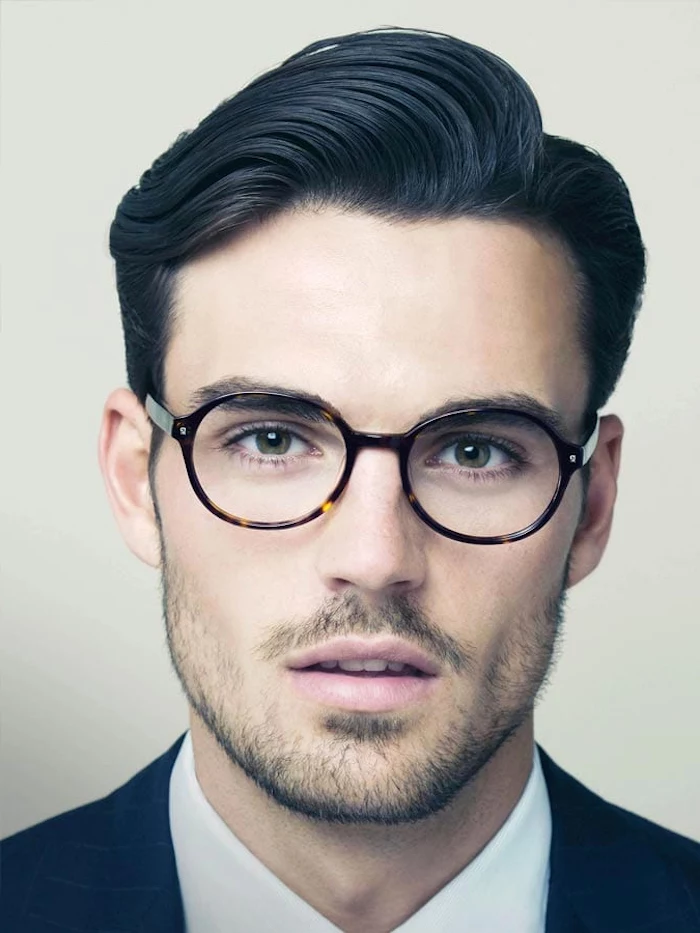
- Oval: Considered the most versatile shape because it’s so balanced. If this is you, congratulations—you can pull off almost anything, from a buzz cut to longer styles. The only thing to maybe avoid is a super heavy, forward fringe that can make your face look rounder.
- Square: Defined by a strong, angular jaw. You can either lean into it with sharp, clean cuts like a high-and-tight fade or a neat crew cut. Or, you can soften it with styles that have more texture and movement on top, like a classic side part with some volume.
- Round: With a round face, the goal is to create the illusion of length and structure. You want height on top, not width on the sides. Pompadours, quiffs, or anything with spiky texture on top is your best friend. A good fade on the sides is non-negotiable, as it slims the face instantly.
- Rectangular (or Oblong): This is like a square face, but longer. The key here is to avoid adding more height. A sky-high pompadour is not the move. Instead, go for a well-proportioned cut that isn’t too short on the sides. A classic side part or a layered cut works great.
- Triangle: Features a jawline that’s wider than the forehead. To create balance, you want more volume and width up top. Fuller styles like a textured quiff or a classic scissor-cut side part are fantastic choices.
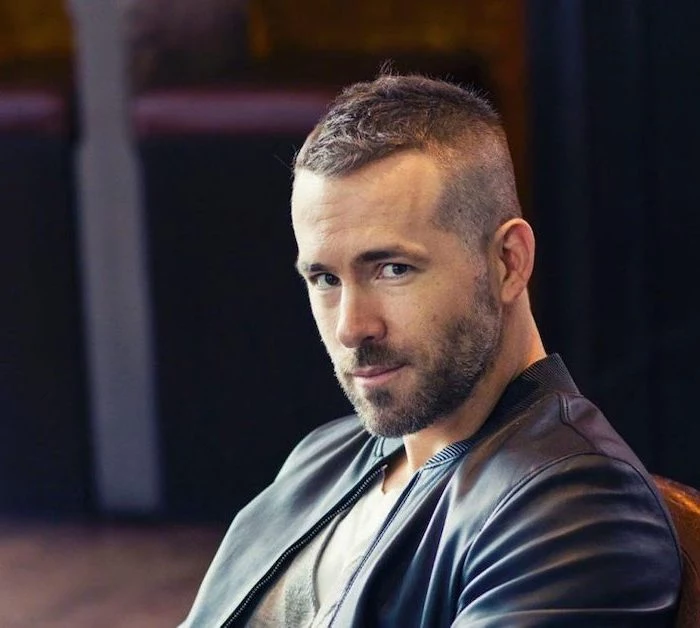
Let’s Talk Shop: Barber Techniques and What to Ask For
A great haircut is so much more than running clippers up your head. It’s a mix of skills that can totally change the outcome of your cut. Knowing the lingo helps you get exactly what you want.
The Magic of a Good Fade
A fade is just a smooth transition from short to long, but the details matter. A Taper Fade is the most traditional, cleaning up the neckline and sideburns for a professional look that grows out nicely. A Skin Fade (or Bald Fade) is bolder, taking the hair right down to the skin. A heads-up on this one: a skin fade is a commitment. It looks incredibly sharp, but you’ll probably need a touch-up every 2-3 weeks to keep it clean. So, factor that into your schedule and your budget.
The price will reflect that extra work, by the way. A standard haircut might run you $30-$40, but a precision skin fade, especially with a beard lineup, is a more detailed service that could be in the $50-$65 range. You’re paying for the time and skill.
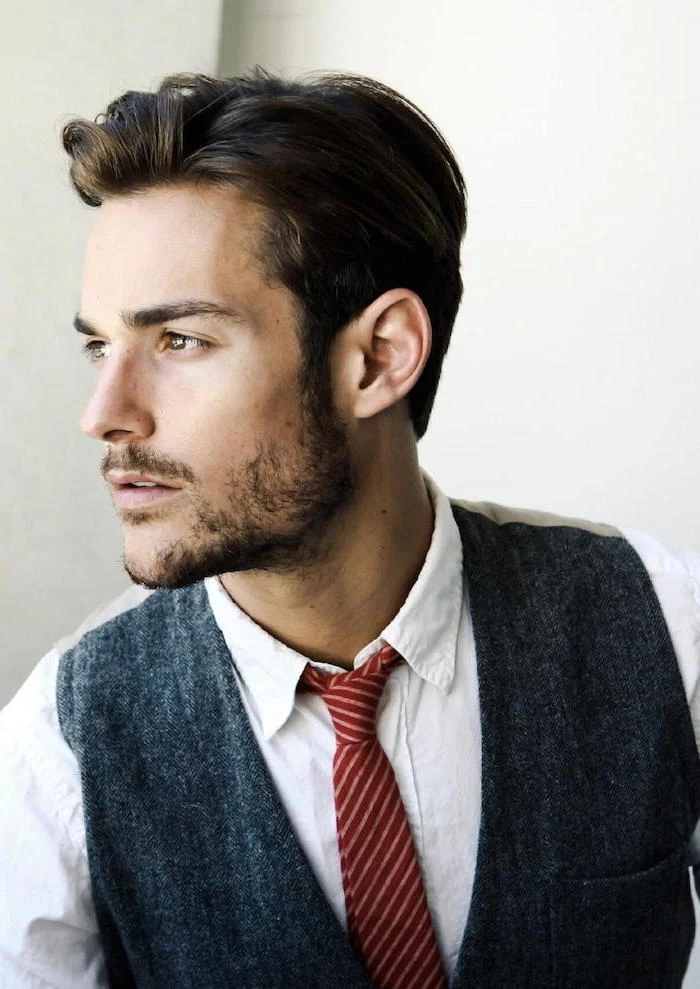
Why Shears Still Matter
Clippers do the heavy lifting, but the real artistry is in the shear work. Scissor-over-comb is a foundational technique that gives a softer, more blended finish than clippers alone. We also use shears for Texturizing—thinning out dense hair so it moves and sits properly. In experienced hands, this creates amazing results. In the wrong hands… well, you can end up with holes or frizz.
Product 101: Pomade vs. Clay vs. Wax
Walking down the hair-care aisle is confusing. Here’s a super simple breakdown:
- Pomade: This is your go-to for slick, classic styles like a pompadour or a neat side part. Water-based pomades offer a good hold and wash out easily, and they come in finishes from matte to high-shine.
- Clay: Perfect for that textured, messy, natural look. Clays have a strong hold but a very low-shine (matte) finish. They add thickness and are great for fine hair.
- Wax: Offers a medium hold and usually a bit of shine. It’s more pliable than clay, so you can restyle it throughout the day. Good for shorter cuts that need some definition without looking too “styled.”
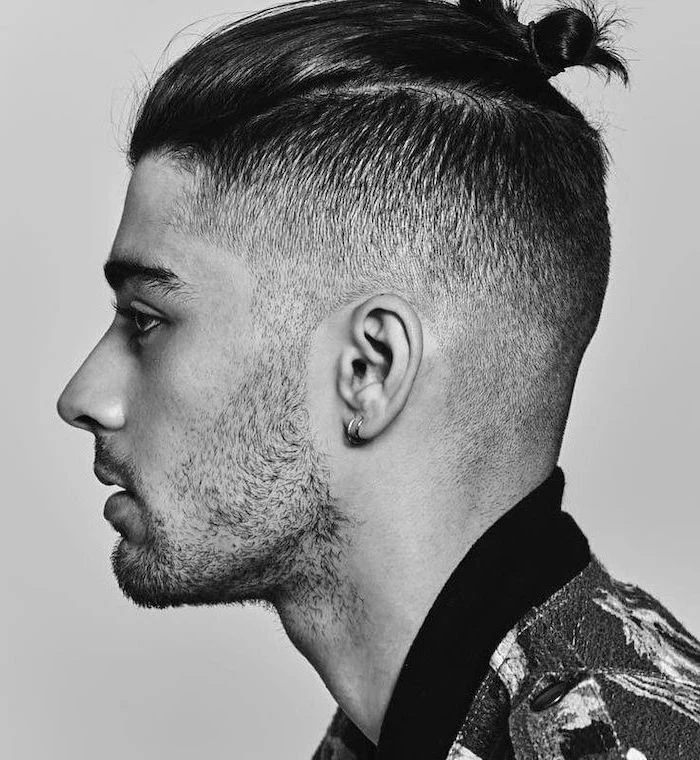
What to Do About… (Common Hair Problems)
Every guy has something he’s worried about. Here’s how we tackle the most common issues.
Receding Hairlines
The absolute biggest mistake is growing the front long to comb it over. It fools no one and just draws more attention to it. The better move is to go shorter. A textured French crop or a classic crew cut minimizes the contrast and looks intentional and confident.
Thinning on Top
Just like with a receding hairline, length is not your friend. Shorter cuts like a buzz cut or a high and tight make thinning way less obvious. And I can’t stress this enough: use matte styling products! A light-absorbing clay or paste will make hair appear thicker, while shiny gels will just reflect light off your scalp.
Getting It Right: The Shop, The Chat, and The Tip
Okay, let’s get down to the practical stuff that guarantees a good experience, not just a good haircut.
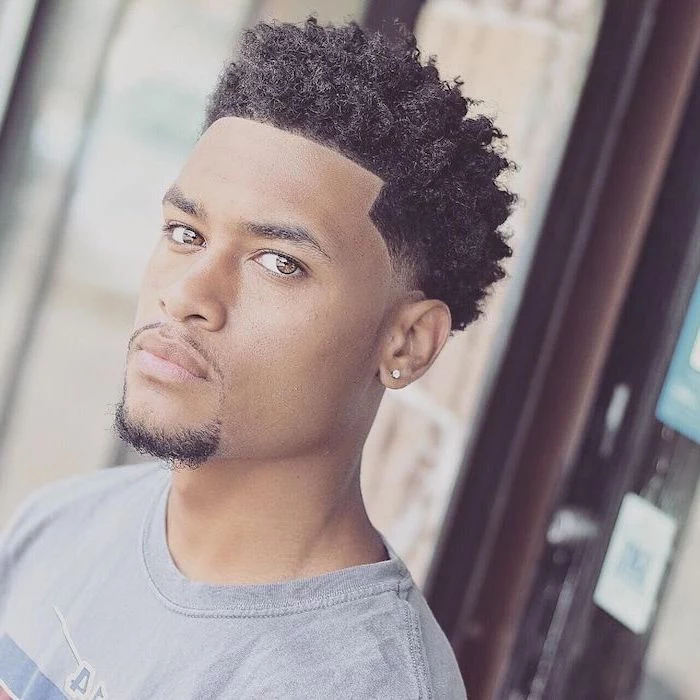
Barber or Salon Stylist?
People ask me this all the time. Think of it this way: barbers are specialists in short, traditional men’s haircuts. We live and breathe clippers, fades, and straight-razor work. A salon stylist is often a master of longer hair, color, and scissor-cutting techniques. If you want a sharp fade and a perfect beard trim, see a barber. If you have longer hair and want complex layers or color, a stylist might be a better fit.
How to Talk to Your Barber
Don’t be shy! We want to know what you’re thinking. Here’s a simple script:
- Start with the basics: “I’m thinking of getting about [an inch] off the top and cleaning up the sides.”
- Talk about your lifestyle: “I need something low-maintenance. I don’t use a blow dryer, and I only spend about two minutes on my hair in the morning.”
- Bring photos: This is HUGE. Show us what you like. And here’s a pro-tip: also bring pictures of what you DON’T like. Knowing what to avoid is just as helpful.
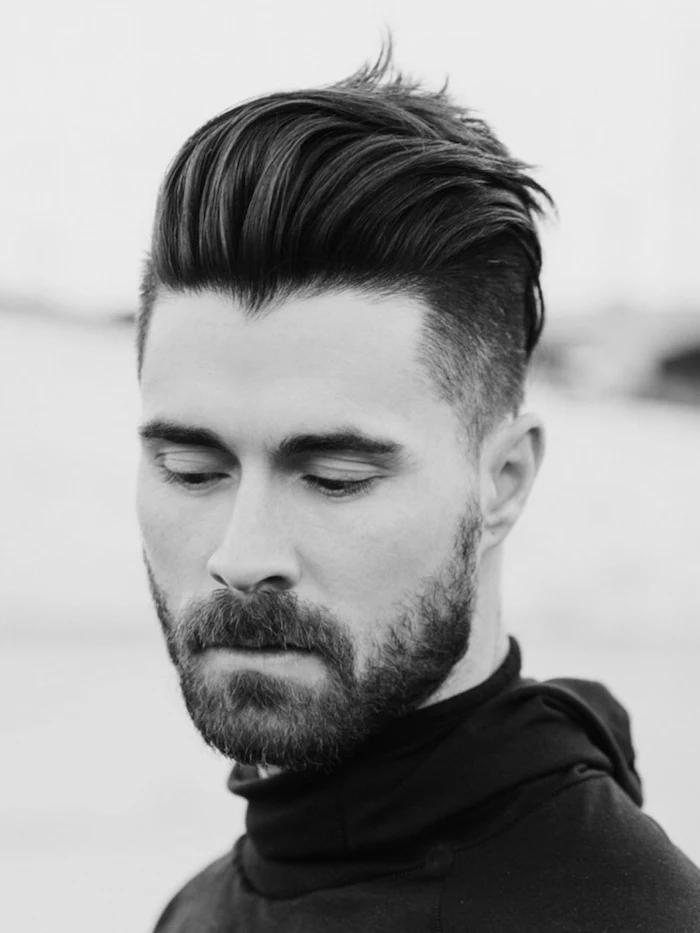
A Quick Word on DIY…
I know it’s tempting to try and clean up your own neckline. But please, be careful. I once had a guy come in who tried to give himself a fade using a dog grooming kit he bought online. It took me over an hour and three different guards to make him look human again. Don’t be that guy. The biggest risk is cutting into your natural hairline, which can take months to grow back right.
And finally, a little shop etiquette. If you’re happy with your cut, a tip is always appreciated. A good rule of thumb is 20%, maybe a little more if your barber really took their time and nailed the details. It’s a small gesture that shows you value their craft.
Ultimately, a haircut is more than a chore; it’s a piece of your personal brand and a huge confidence booster. Find a licensed, experienced barber you click with, and trust their judgment. When you build that relationship, you’re not just getting a haircut anymore—you’re investing in yourself.
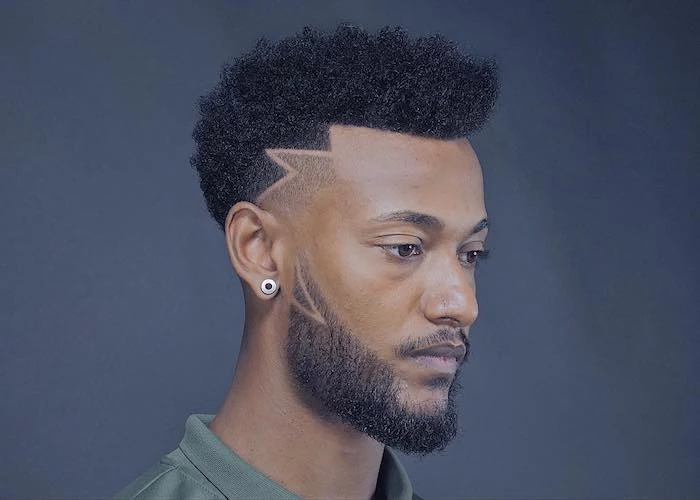
Inspiration Gallery
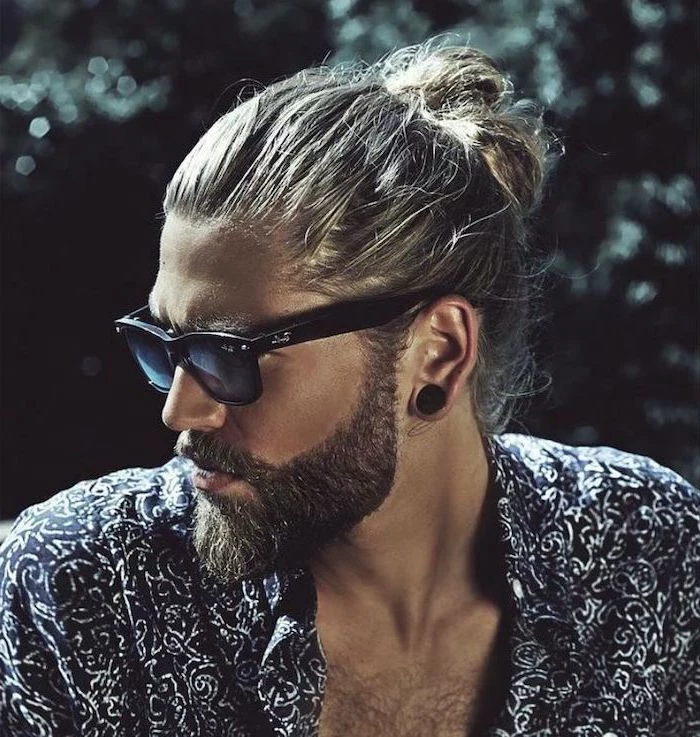
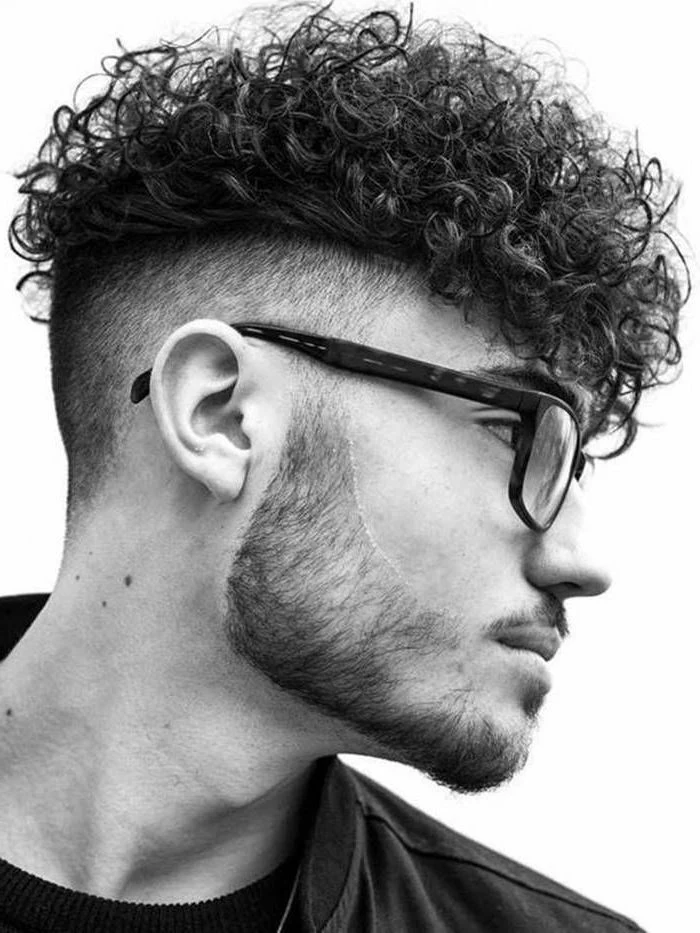
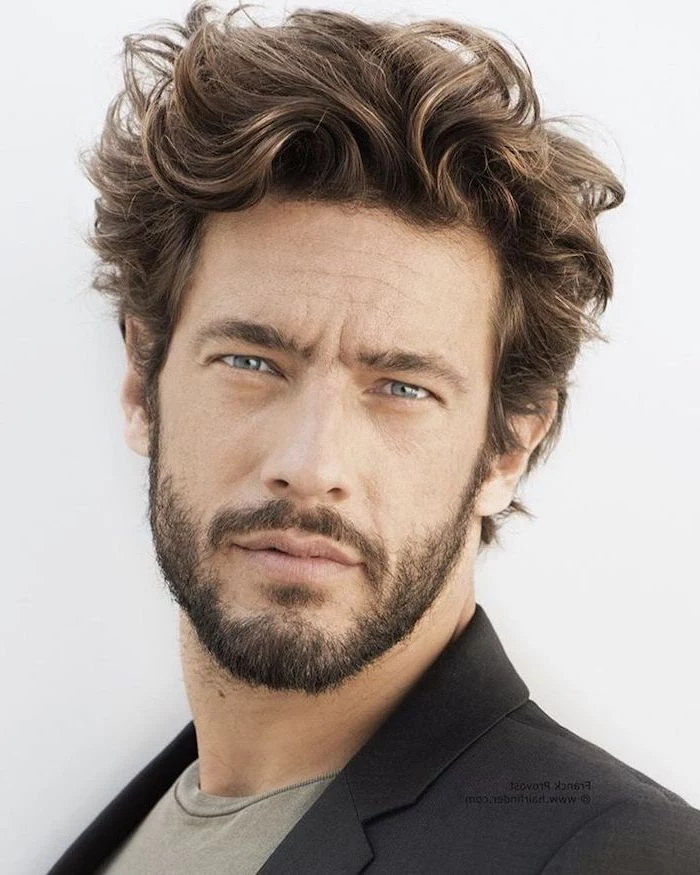
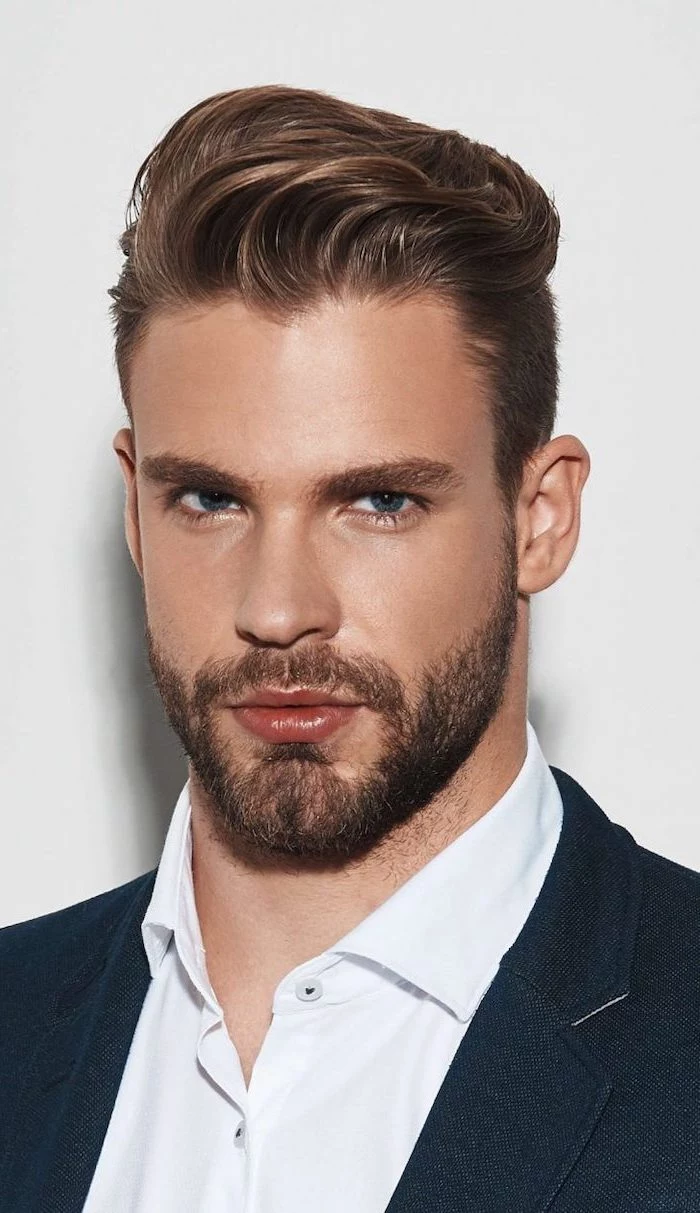
The Golden Rule of the Chair: Your barber wants to understand your vision, but words can be subjective. ‘A little off the top’ means something different to everyone. The best approach? Talk about your lifestyle, how much time you’re willing to spend styling, and what you disliked about your last cut. This gives them the context to create a cut that works for you, not just for the next hour.
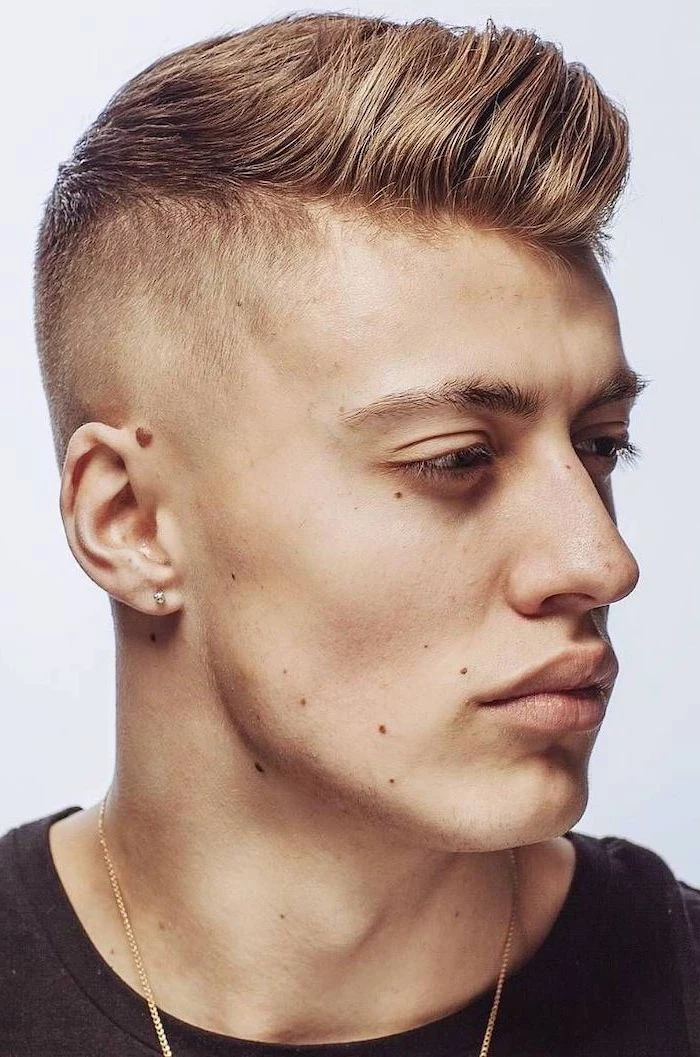
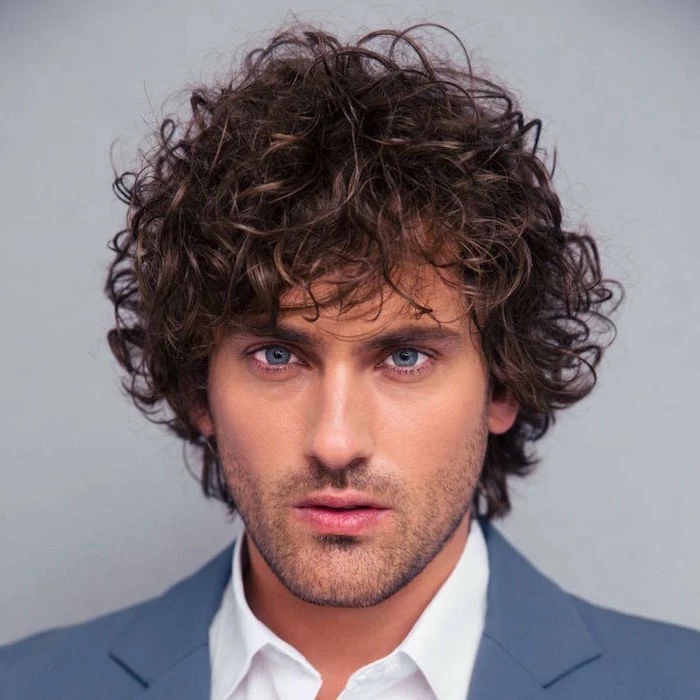
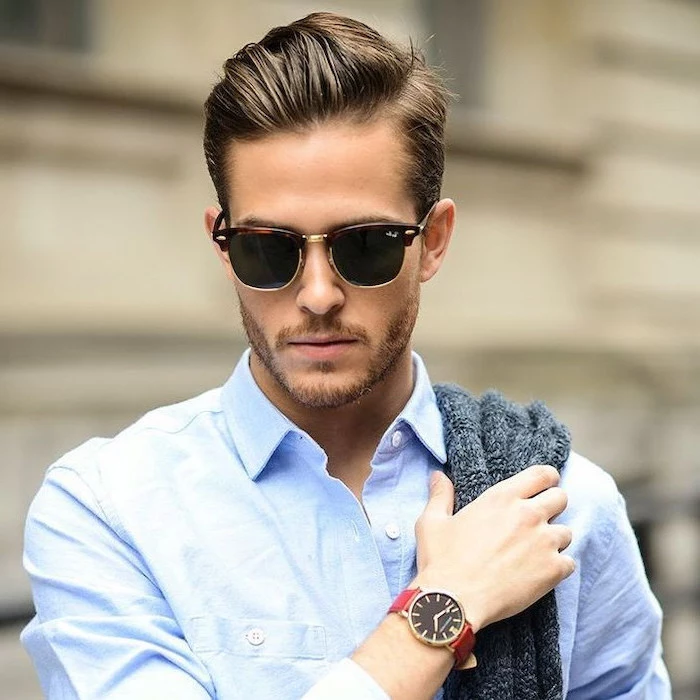
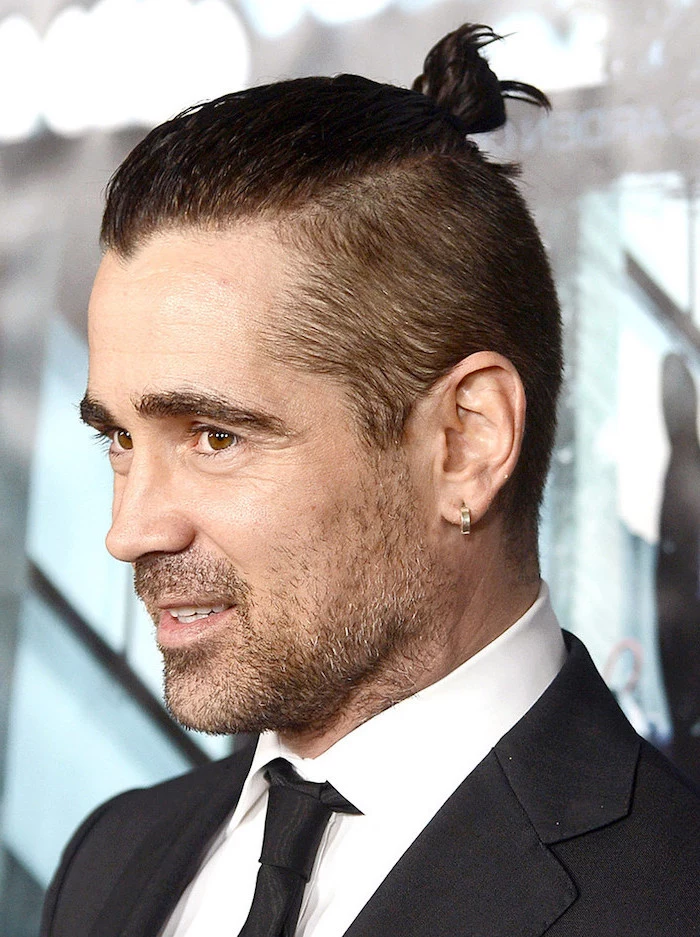
What’s the real difference between a taper and a fade?
Think of them as cousins. A taper is a more conservative, gradual reduction in length, typically at the neckline and sideburns, leaving some visible length at the bottom. A fade, on the other hand, is bolder and brings the hair down to the skin at some point, creating a seamless blend from hair to no hair. Your choice sets the entire tone of the haircut, from classic to contemporary.
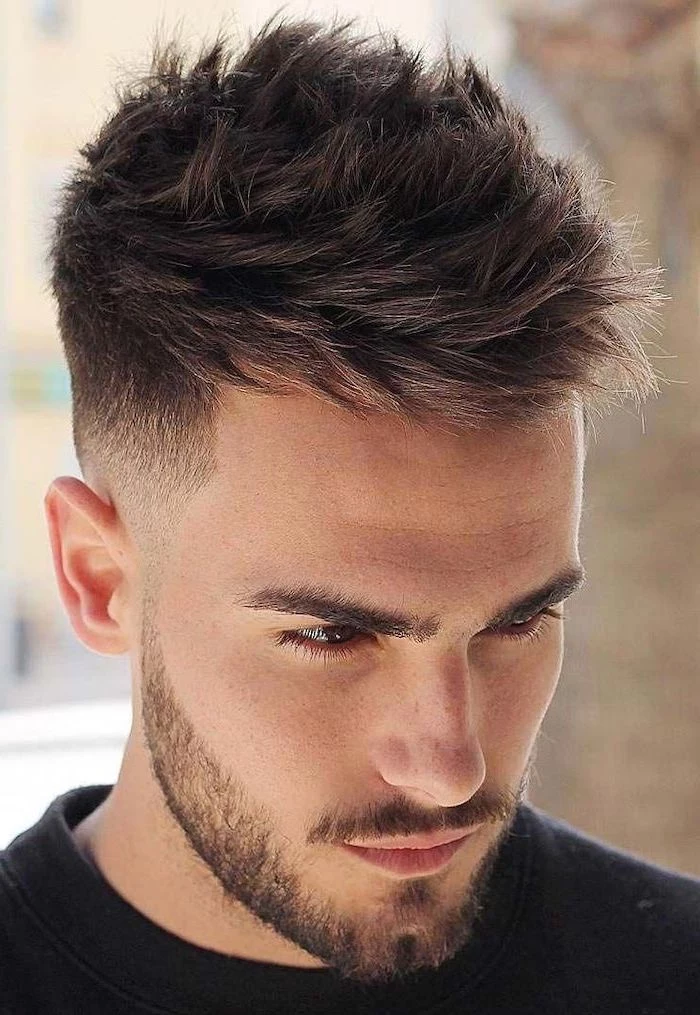
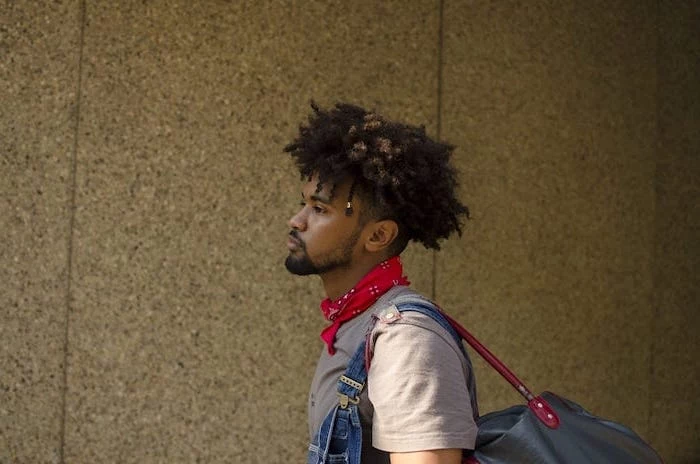
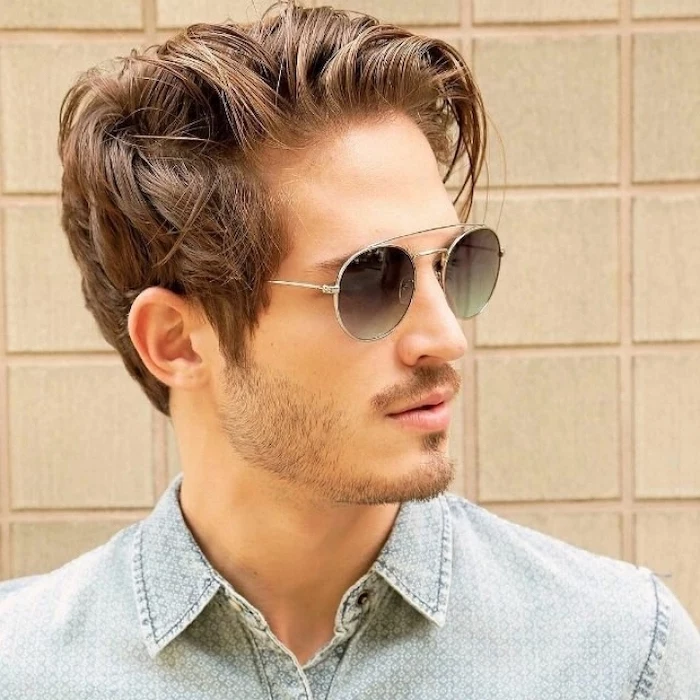
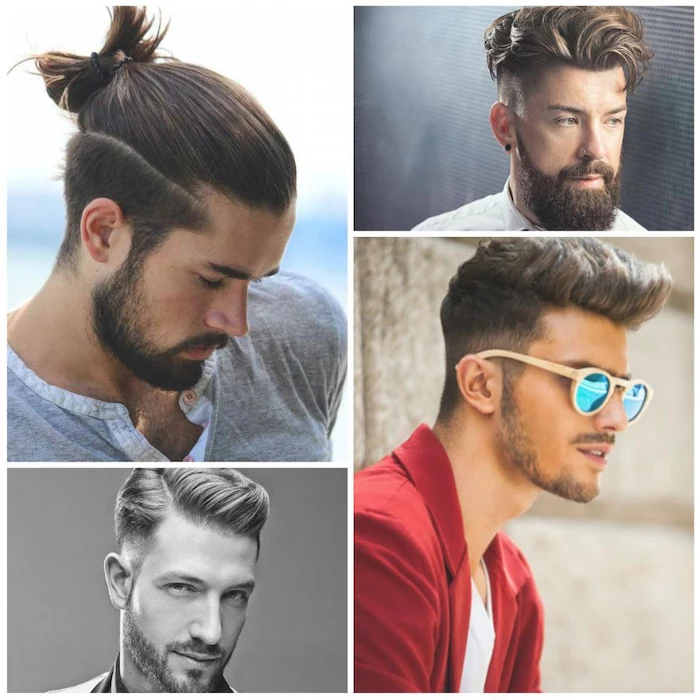
Understanding your styling arsenal is key. Each product has a mission:
- Clay: For texture, volume, and a matte (no-shine) finish. Perfect for messy, natural looks. A go-to is Hanz de Fuko’s Claymation.
- Pomade: For slick, high-shine, classic styles like pompadours. Modern water-based formulas from brands like Layrite or Suavecito wash out easily.
- Wax: For strong, flexible hold without the stiffness of gel. Great for controlling stubborn hair.
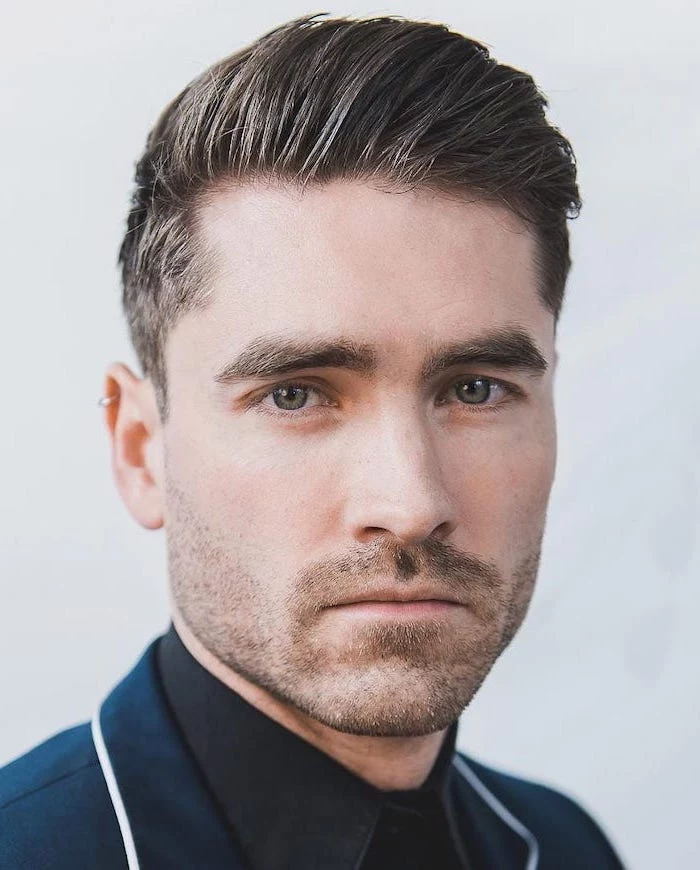
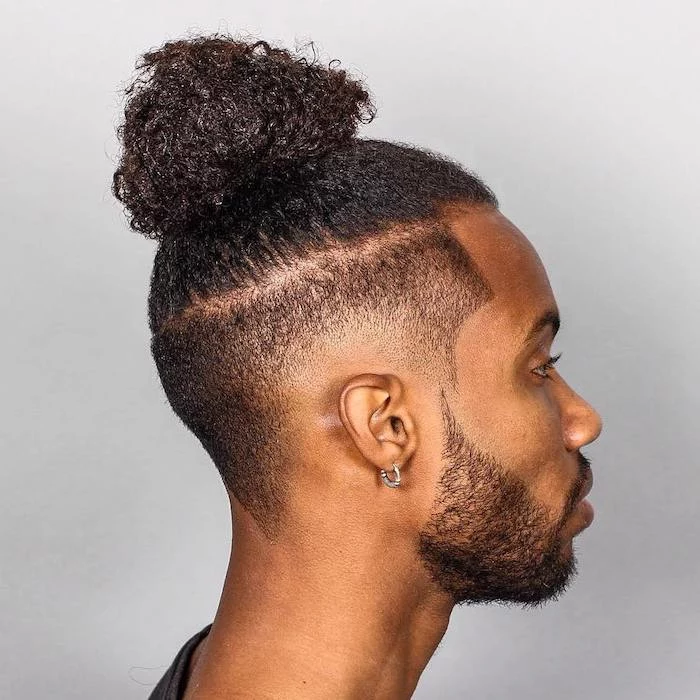
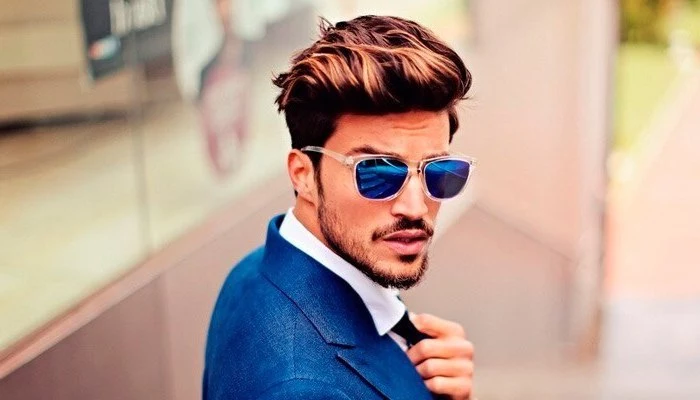
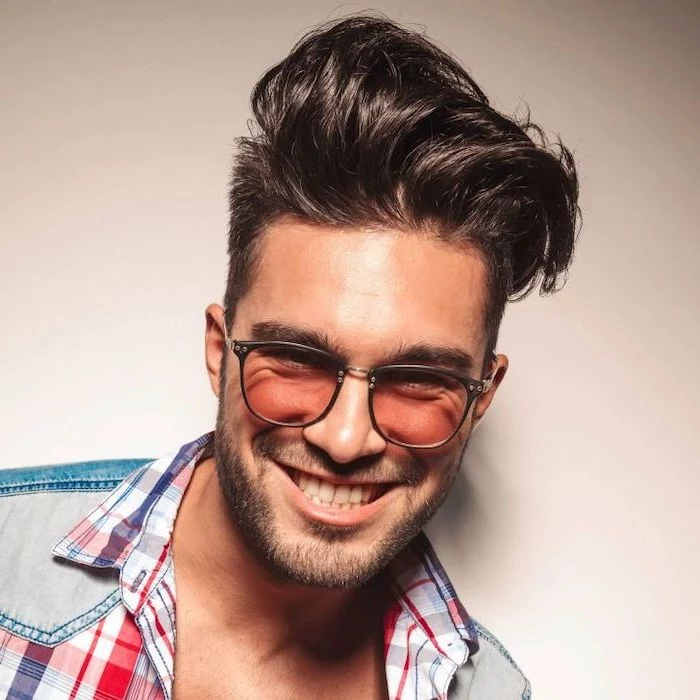
Shears-Over-Comb: This is the traditional barbering technique where the comb acts as a guide for the scissors. It allows for a softer, more personalized cut that follows the contours of your head. It’s especially good for blending and for guys who don’t want the super-sharp look of clippers.
Clippers: These are essential for precision, speed, and achieving those sharp, skin-tight fades. The numbered guards ensure consistency, making them the tool of choice for ultra-clean lines and very short styles.
For the best of both worlds, a great barber will often use a combination of both tools.
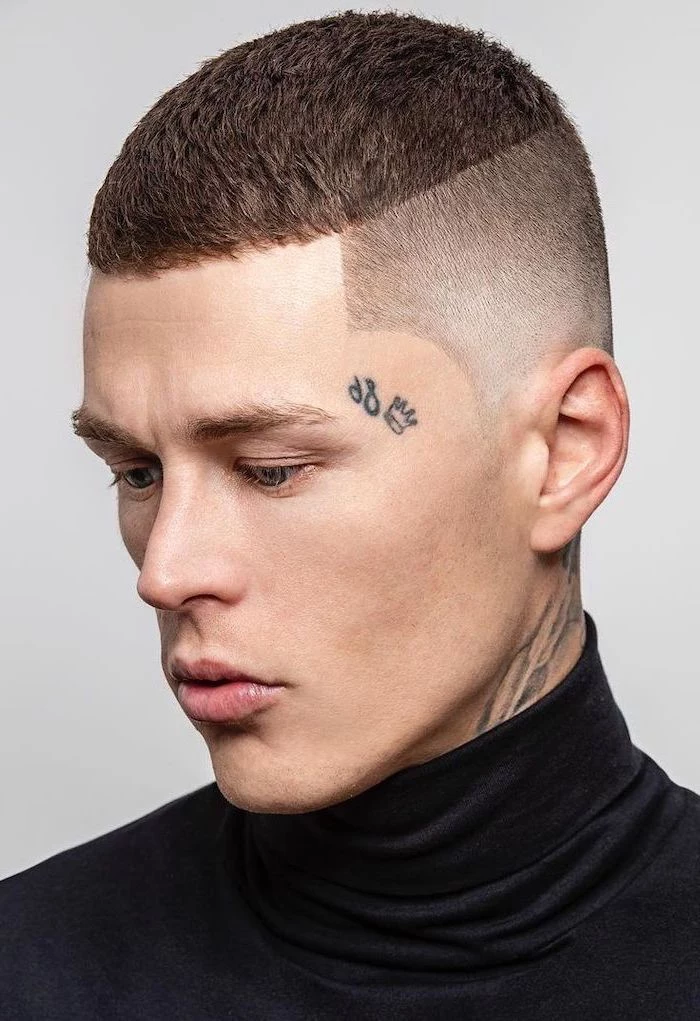
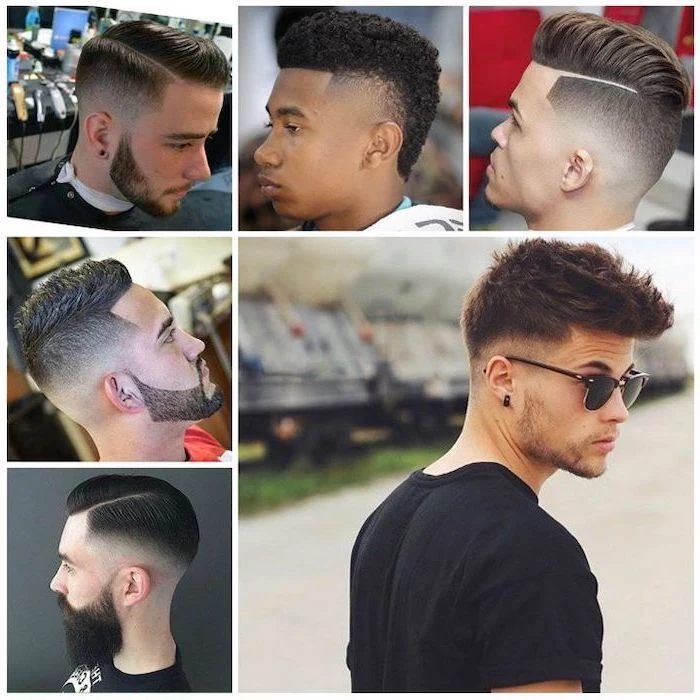
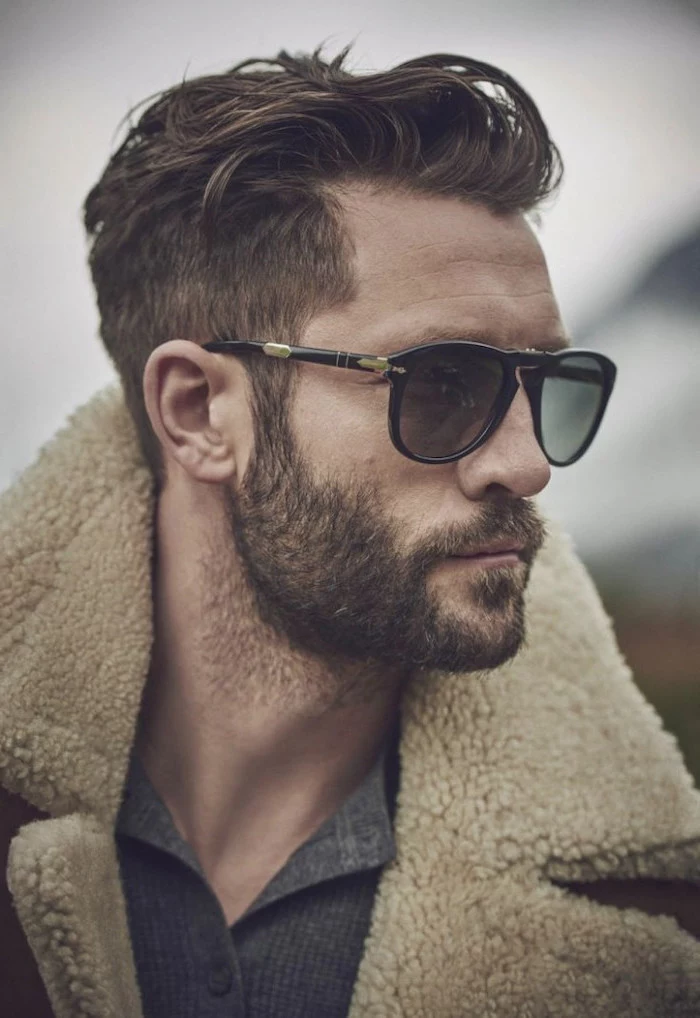

Did you know the iconic red, white, and blue barber pole has a surgical past? The red represents blood, the white symbolizes bandages, and the blue is thought to represent veins. It’s a nod to the medieval era when barbers performed procedures like bloodletting and tooth extractions.
Thankfully, today’s barbers focus exclusively on the art of a great haircut, but the pole remains a powerful symbol of the trade’s long and storied history.
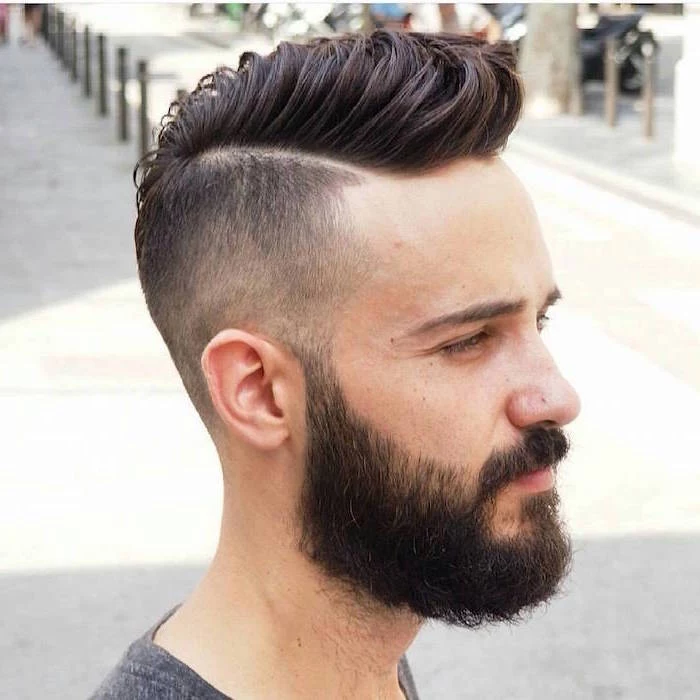

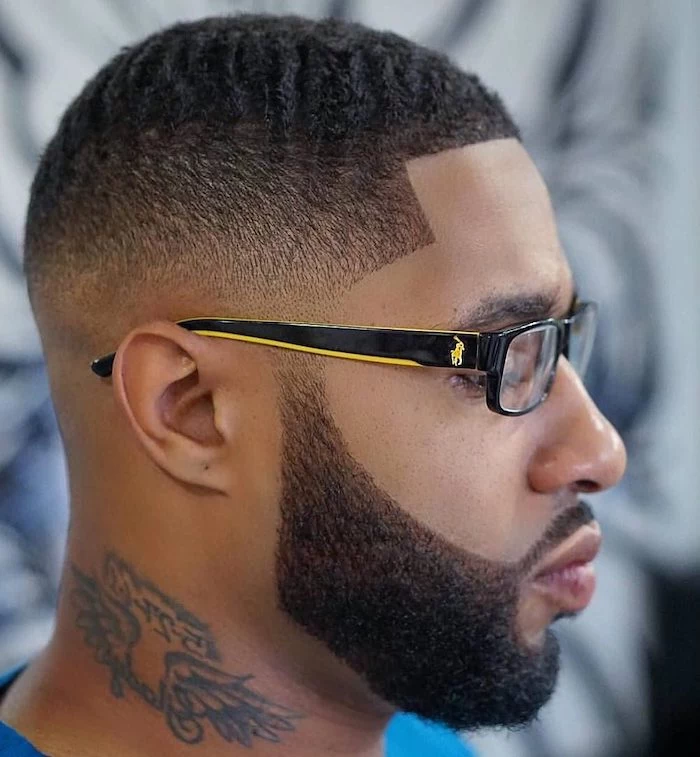
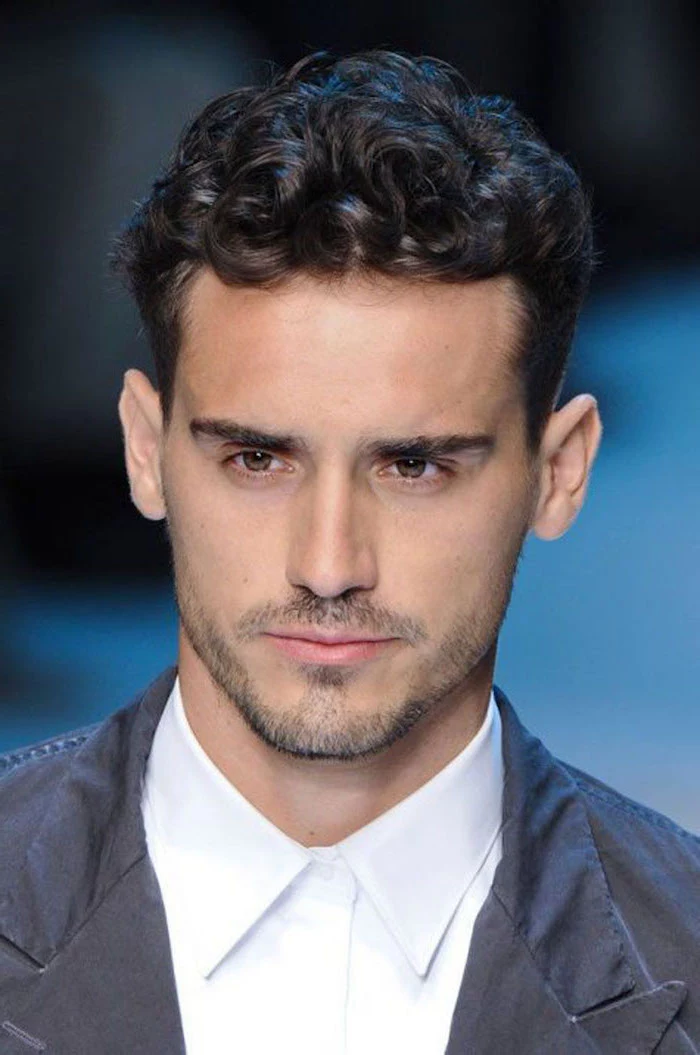
- Adds instant volume to fine hair.
- Creates that effortless, beachy texture.
- Gives hair ‘grip’, making it easier to style.
The secret? Sea salt spray. Use it as a pre-styler on damp hair before blow-drying to build a foundation for your main styling product. It’s the pro’s trick for hair that looks naturally full and textured.
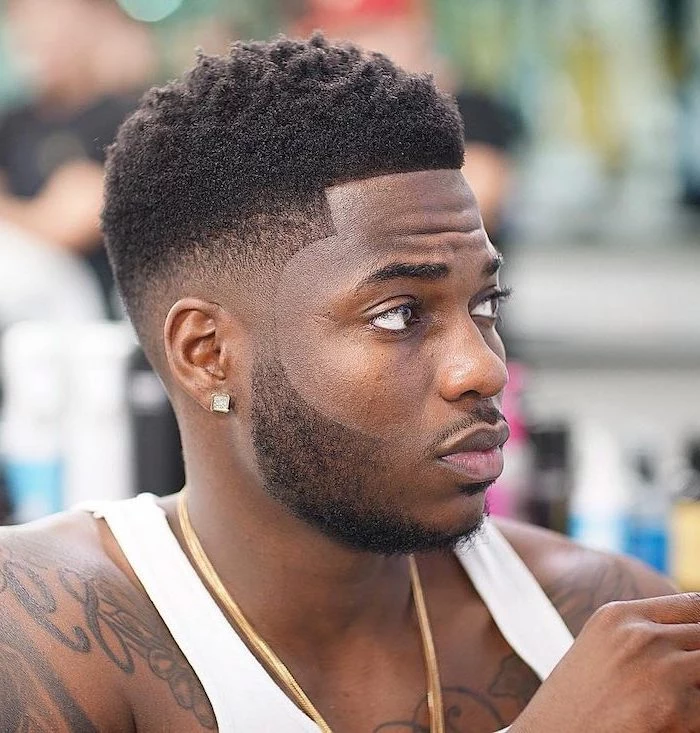

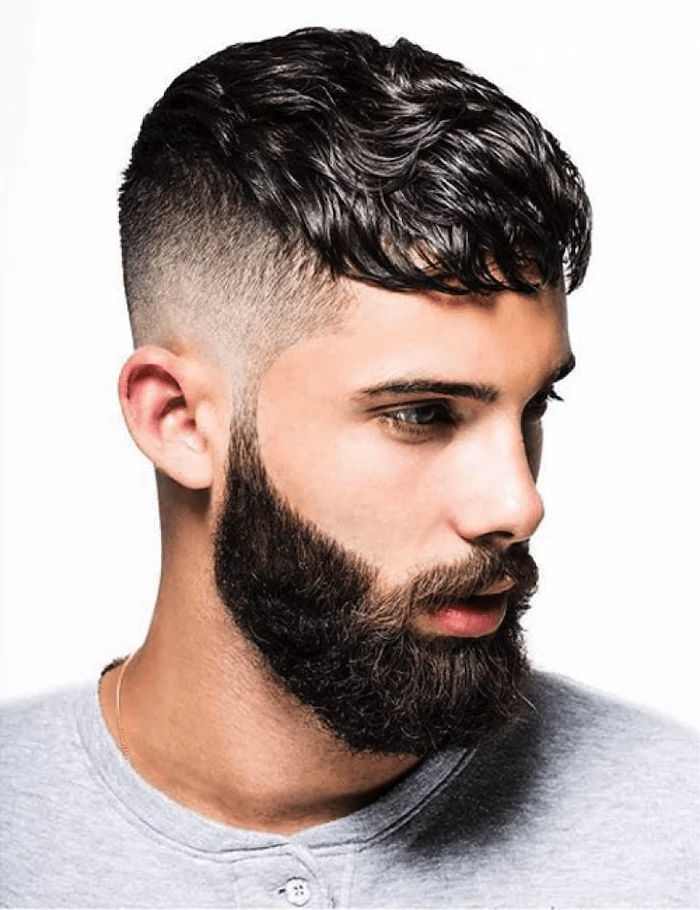
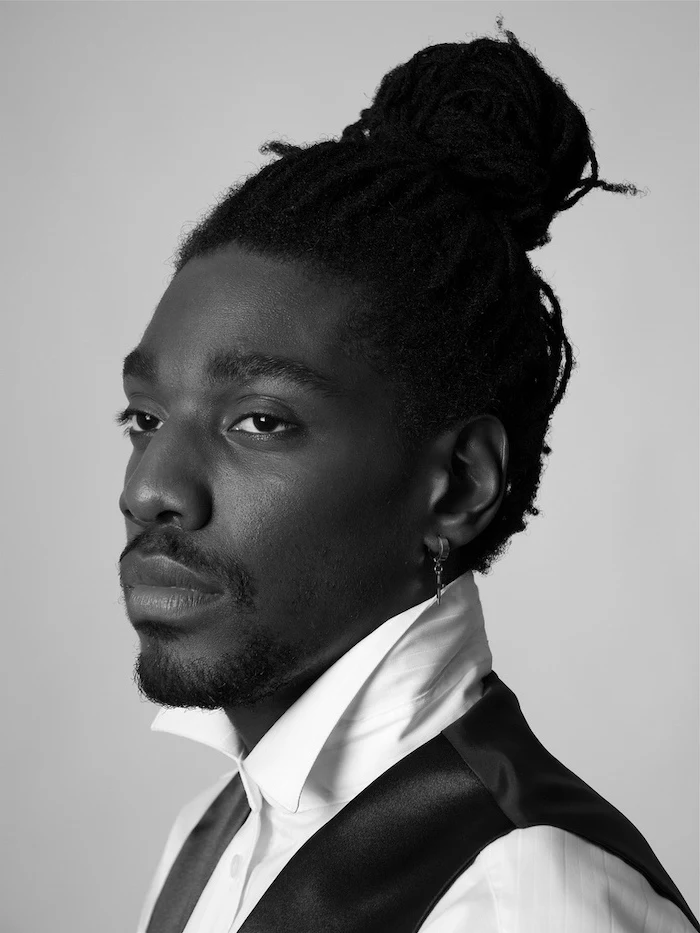
The neckline, or ‘nape,’ is the finishing touch that frames your cut. A squared neckline offers a clean, sharp, and wider-looking finish. A rounded neckline is a softer alternative. But for most, the gold standard is a tapered neckline, which follows your natural hairline for a blend that grows out cleanly and looks great for weeks.
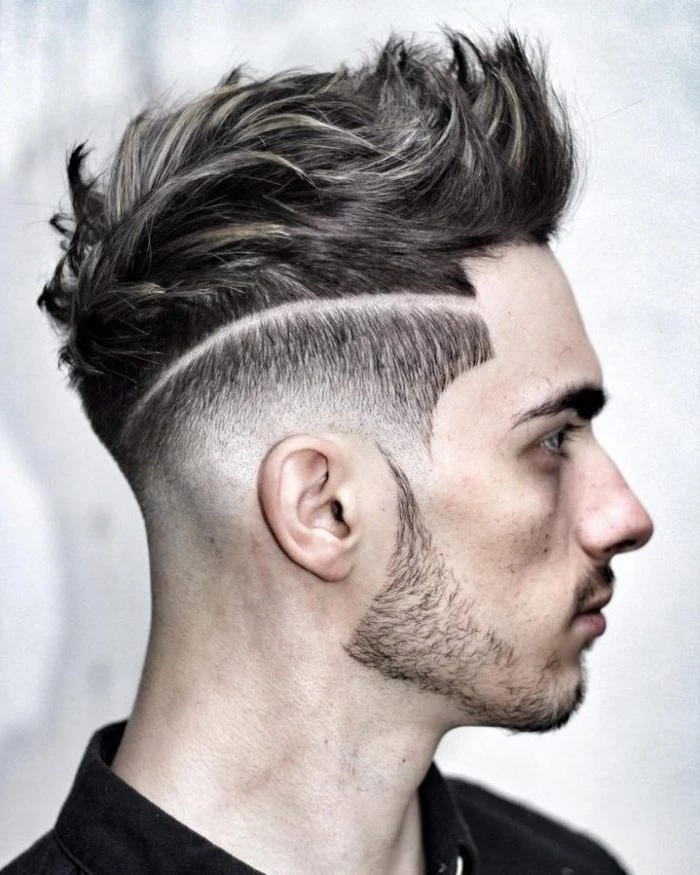
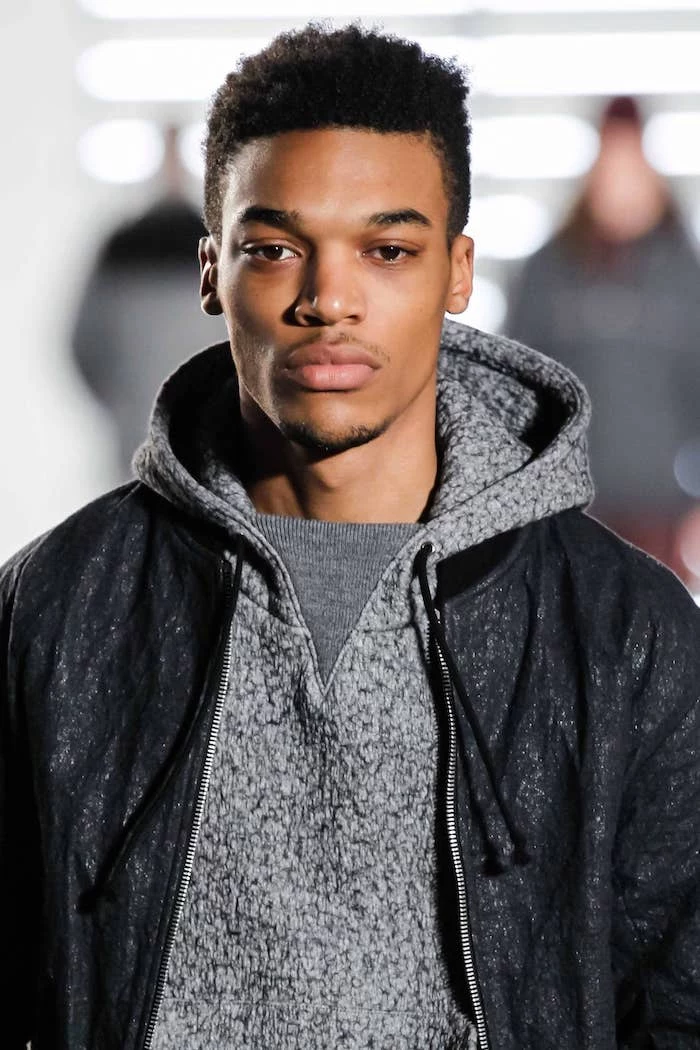
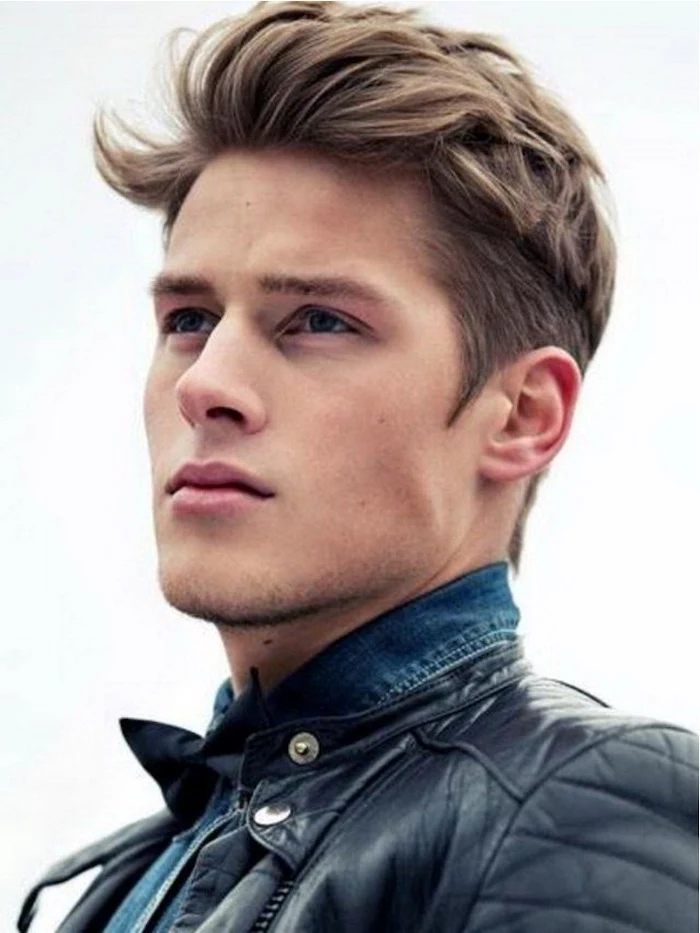
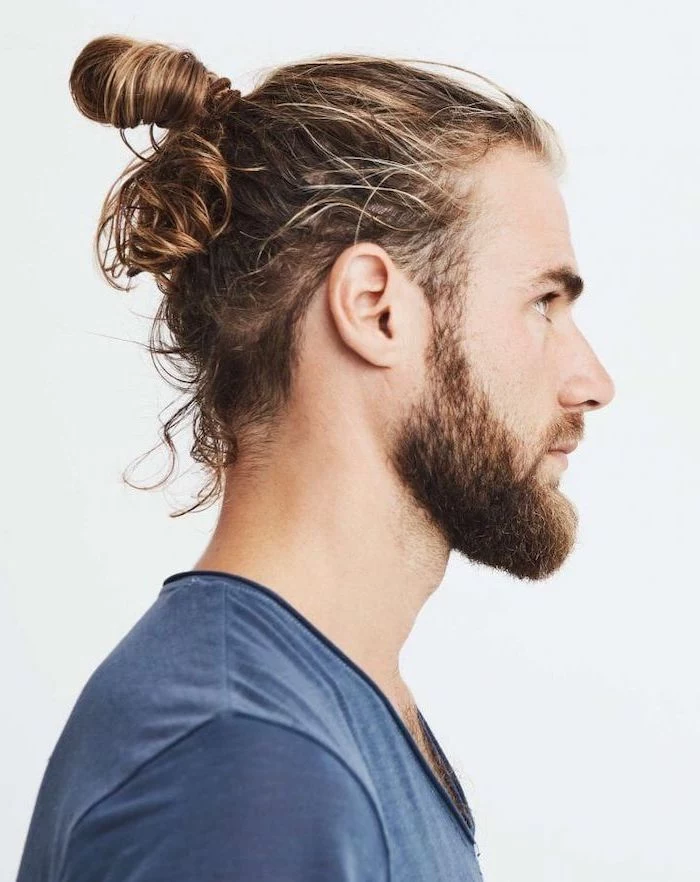
How often should I really get my hair cut?
This depends entirely on your style and how sharp you want to look. For a tight skin fade or a very structured cut, you’ll need a touch-up every 2-3 weeks to keep it pristine. For medium-length styles (think longer on top, scissor-cut sides), you can stretch it to 4-5 weeks. For longer hair, a trim every 6-8 weeks is usually enough to remove split ends and maintain shape.
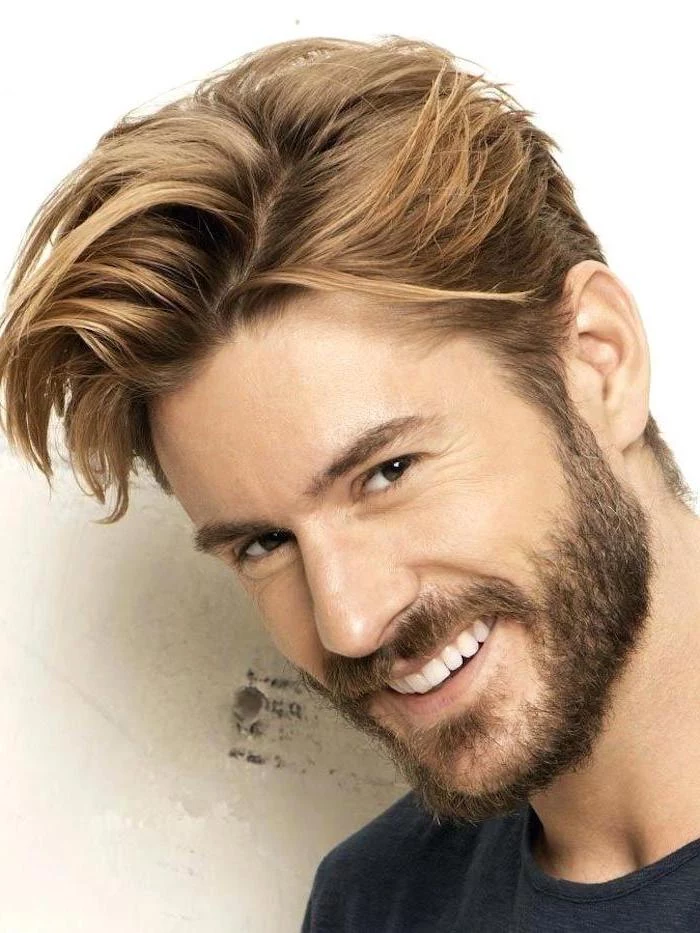
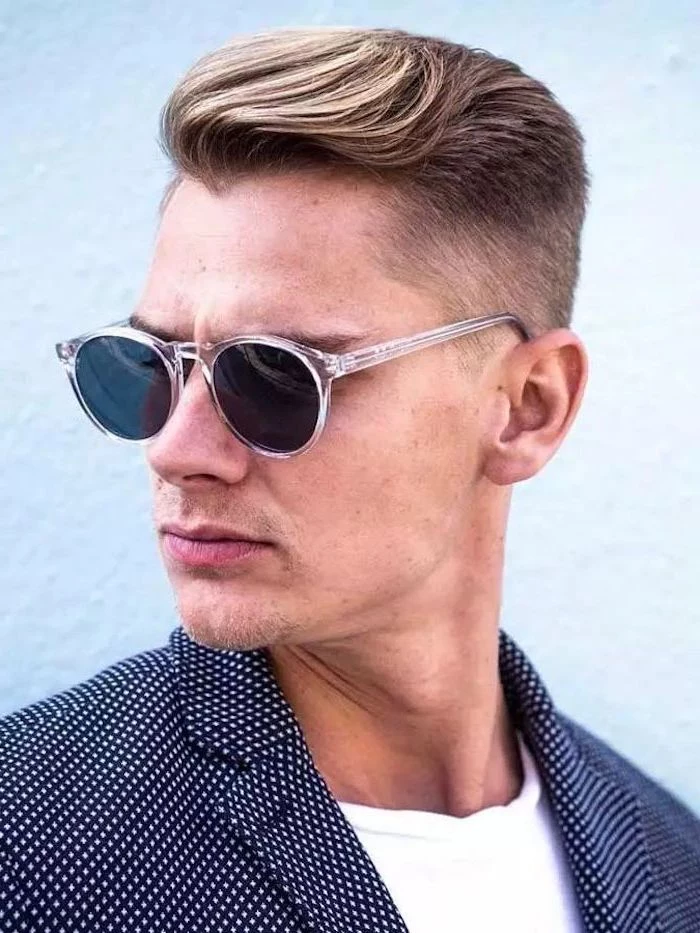
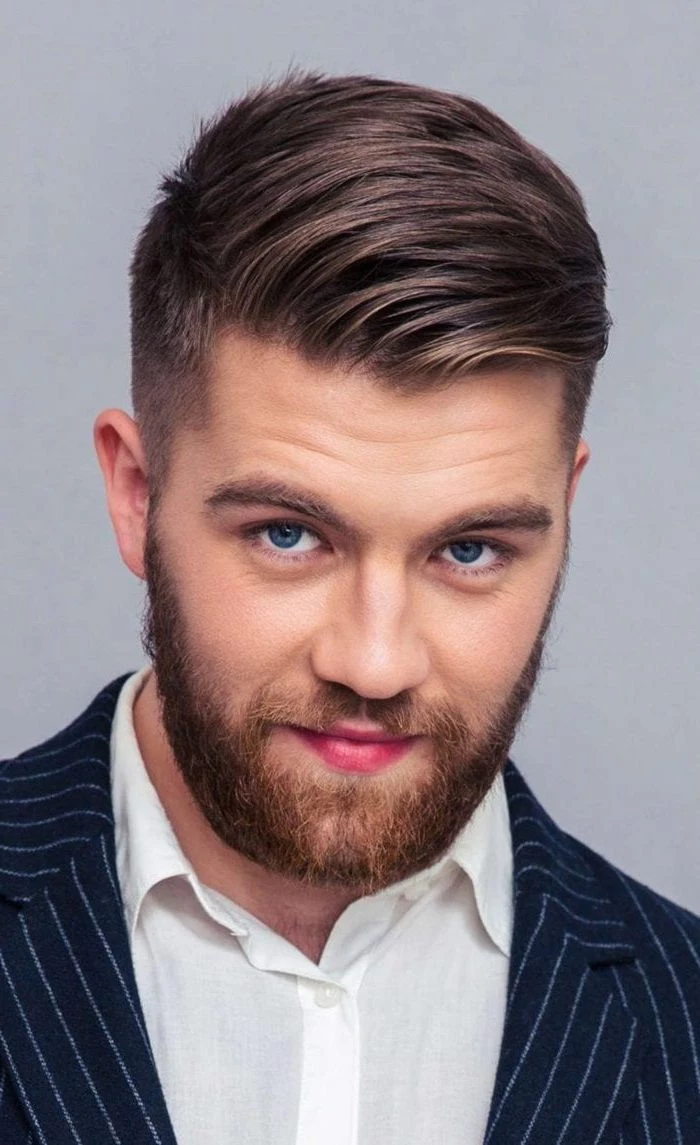

A common mistake for men with thick, unruly hair is asking the barber to ‘thin it out’ aggressively. While texturizing shears can remove bulk, overdoing it can shatter the hair’s cuticle, leading to frizz and making the ends look weak and frayed. A better approach is to choose a cut that works with your hair’s natural volume, using specific cutting techniques to strategically remove weight without sacrificing hair health.
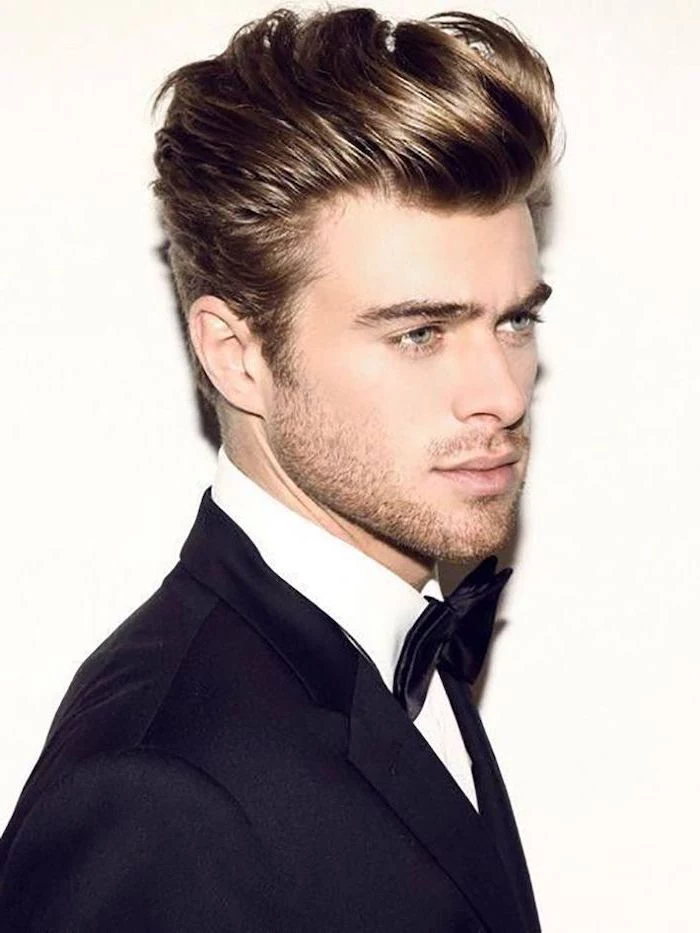
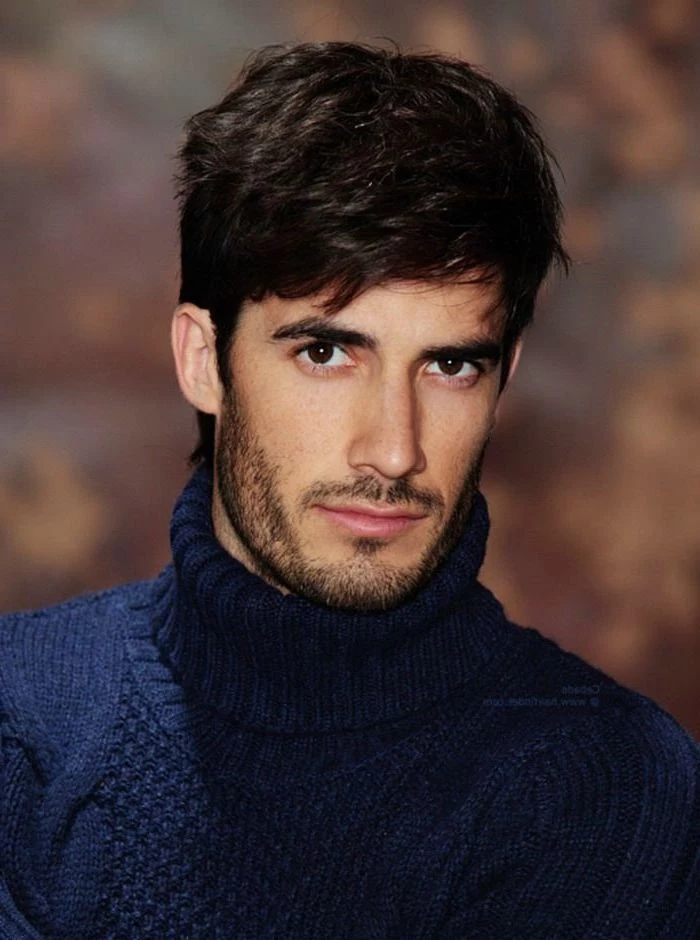
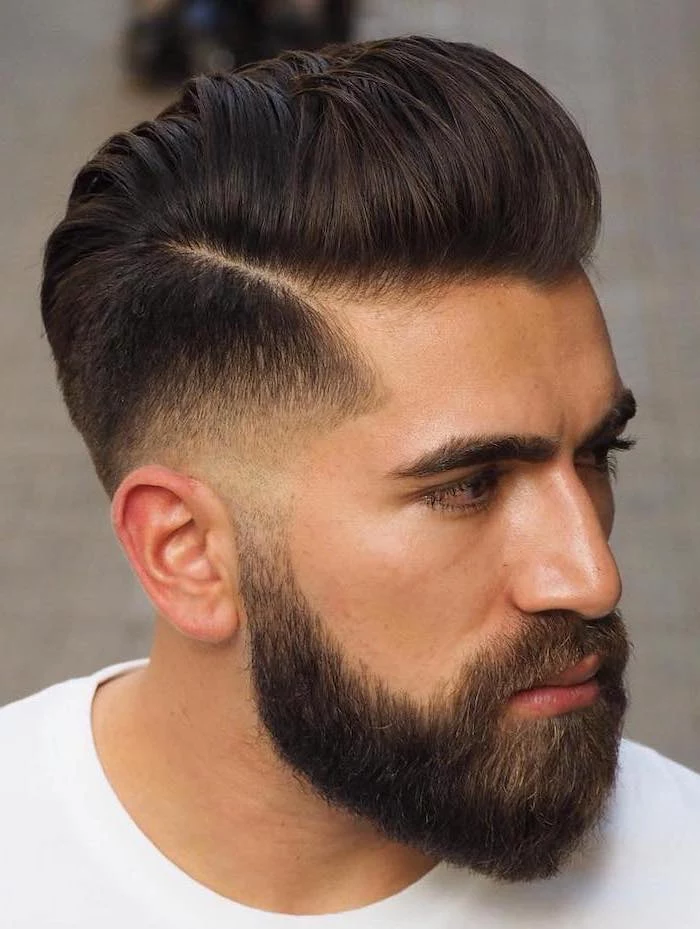
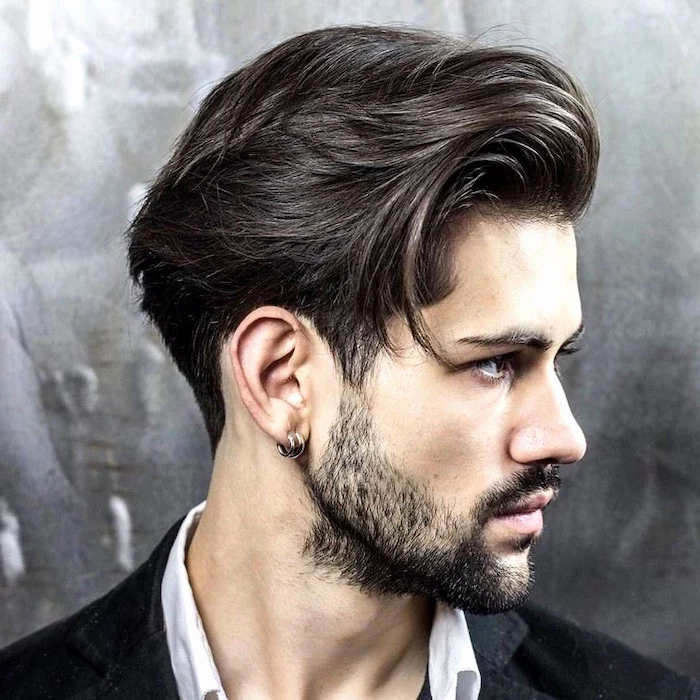
Don’t just think about your hair; think about how it connects to your beard. A game-changing detail is the ‘beard fade,’ where your barber skillfully tapers your sideburns to blend seamlessly into the length of your beard. This small step elevates the entire look, transforming two separate elements into one cohesive, intentional style. It’s the difference between just having a haircut and a beard, and having a truly groomed appearance.
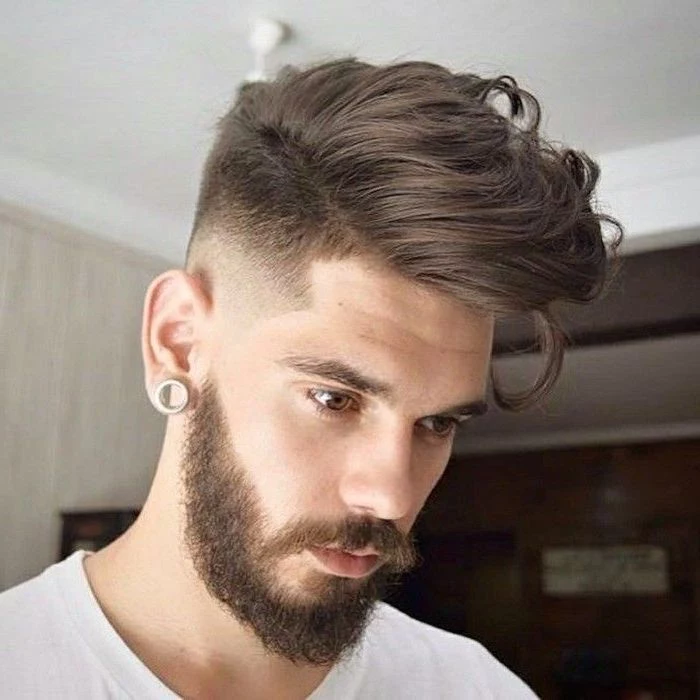
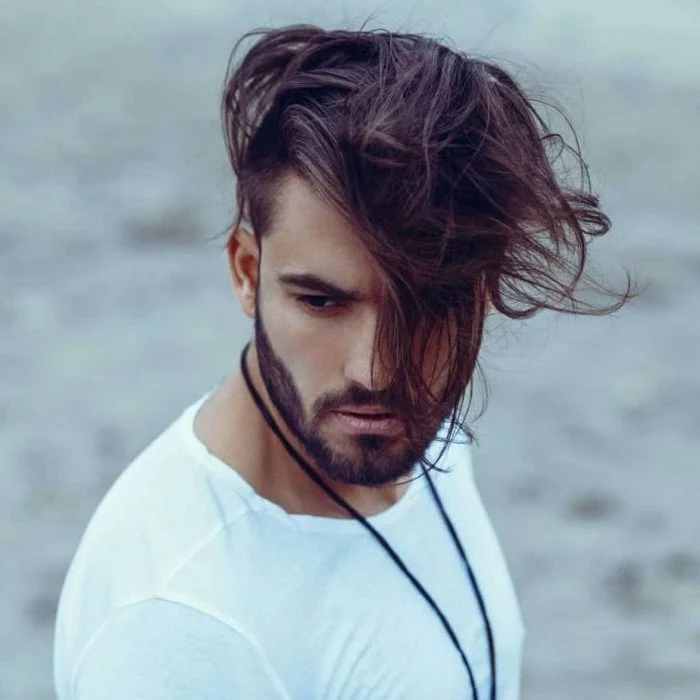
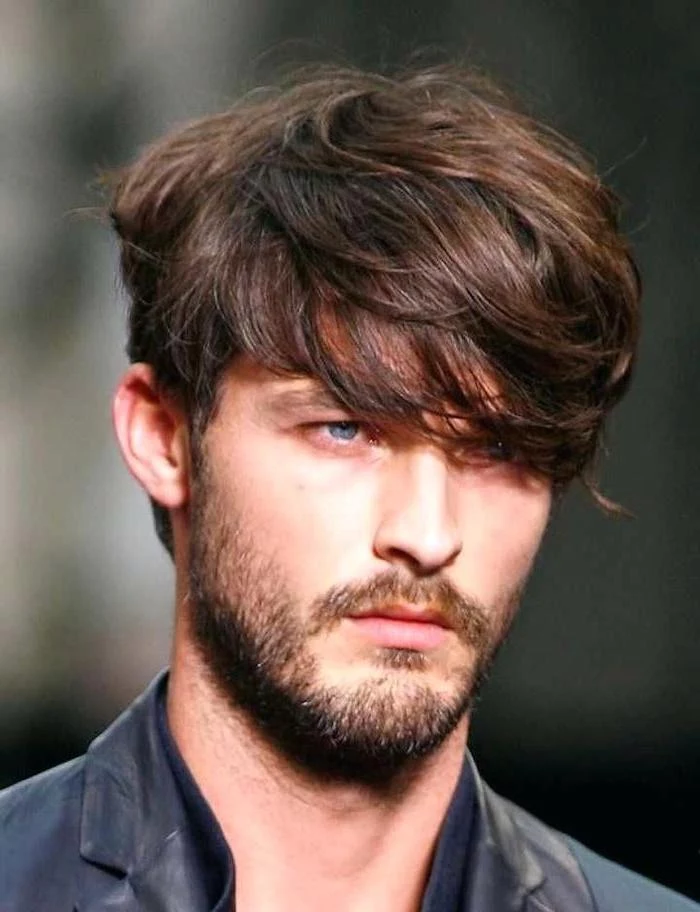
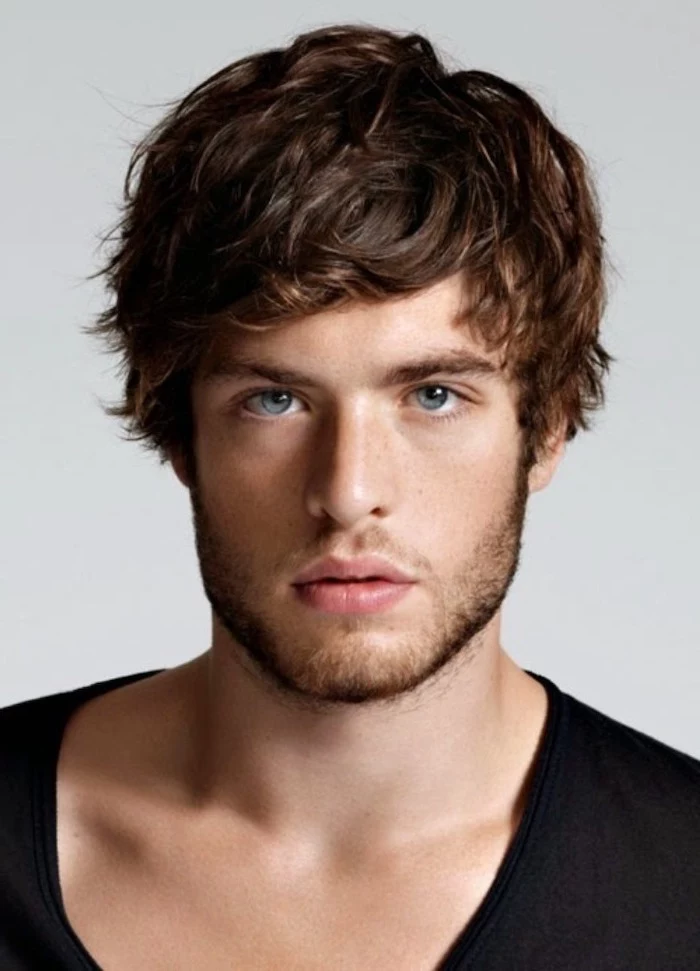
Before you even sit in the chair, ask yourself these three things:
- How many minutes am I realistically willing to spend on my hair each morning? (Be honest!)
- What did I like or dislike about my last haircut as it grew out?
- Am I looking for something professional, casual, or edgy?
Knowing these answers is half the battle and gives your barber a clear roadmap.
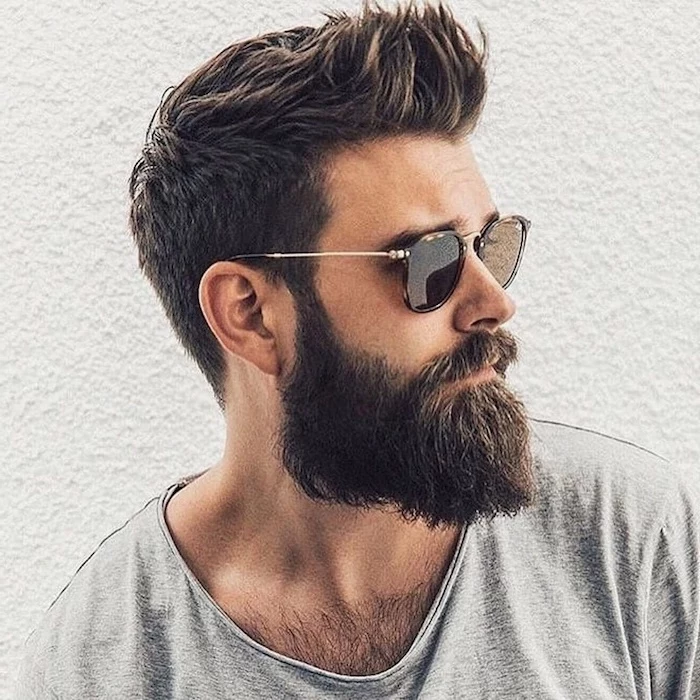
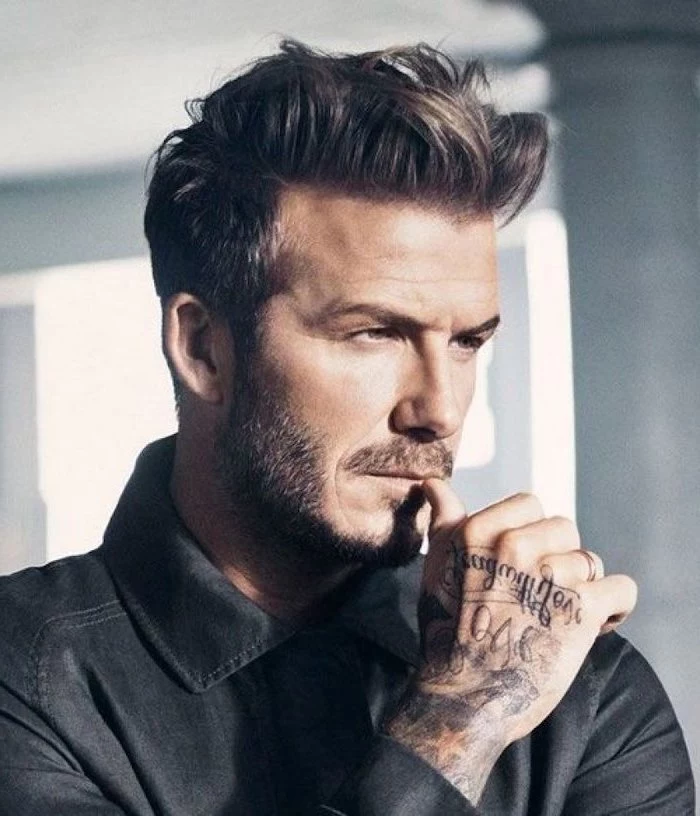
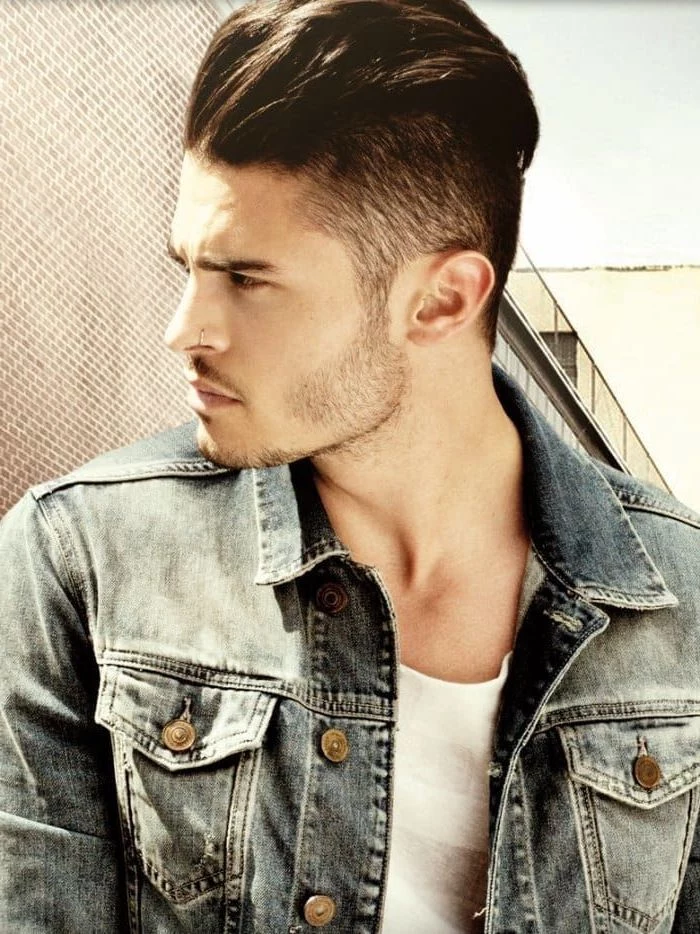
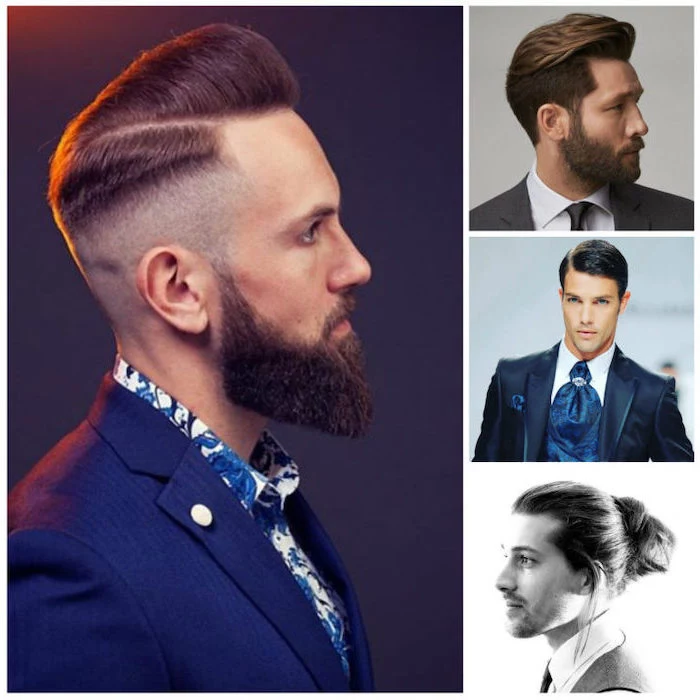
The problem: That stubborn cowlick or whorl that makes your hair stick straight up.
The solution isn’t to fight it with a ton of product. Instead, work with it. The best strategy is often to leave a bit more length in that specific area. The extra weight helps pull the hair down, giving you more control. A skilled barber can cut the surrounding hair in a way that incorporates the cowlick into the overall style, turning a frustration into a feature.
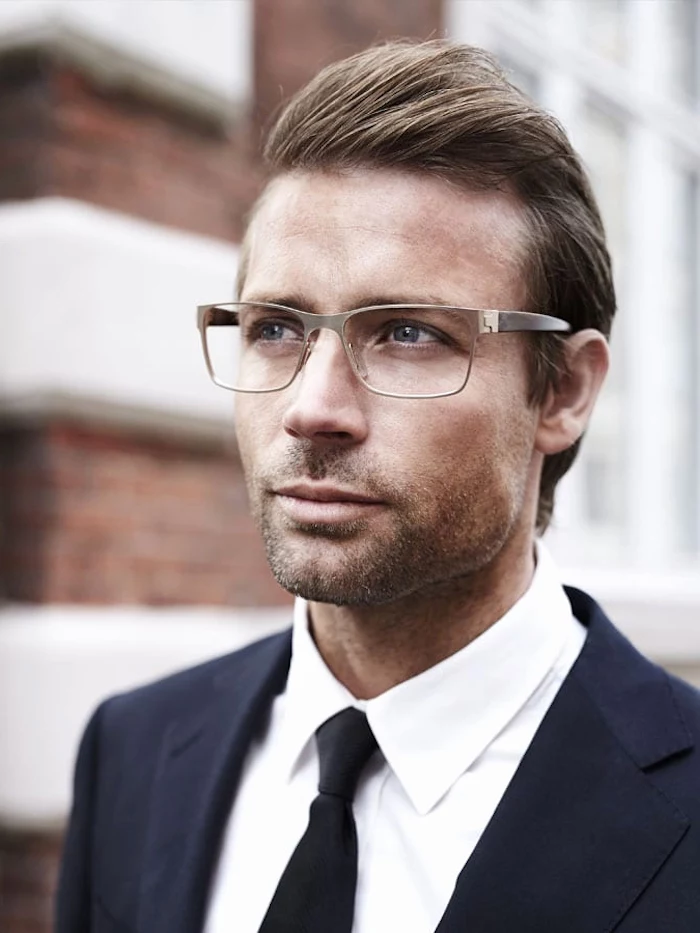
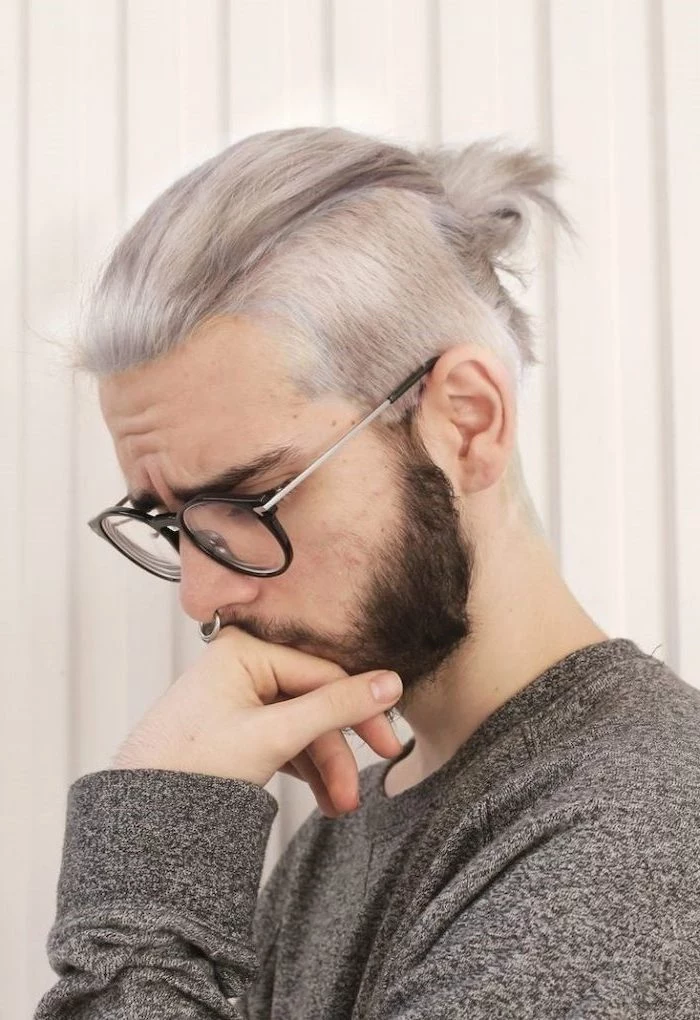
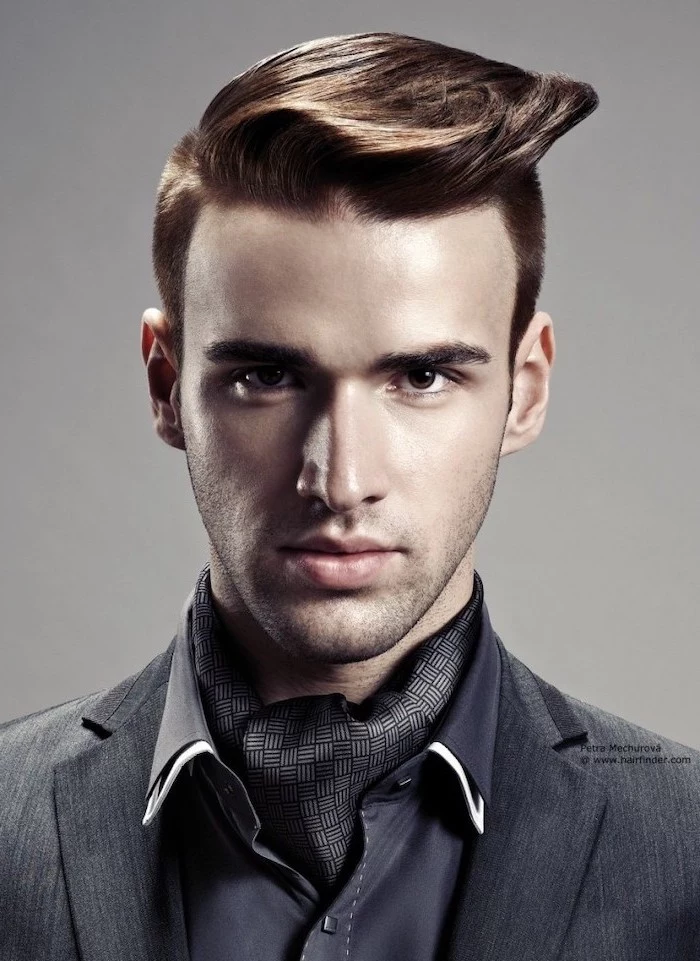
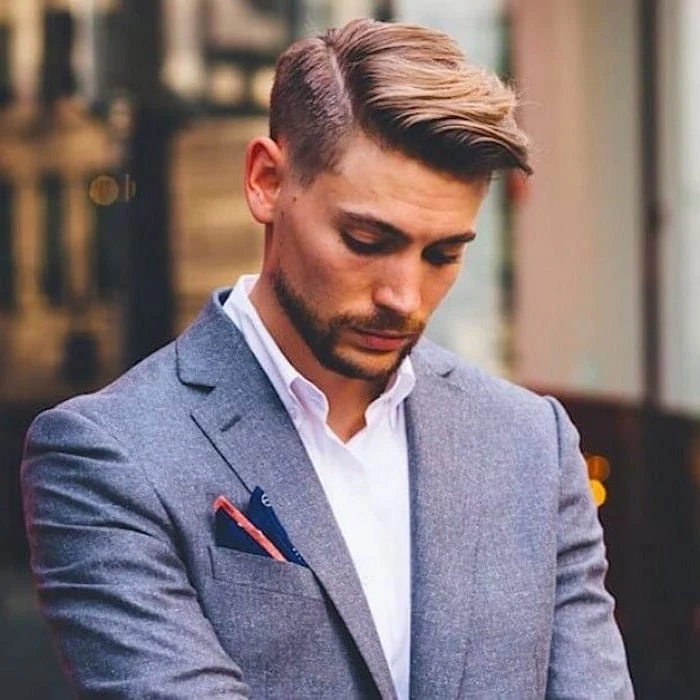
Important point: A photo is a fantastic communication tool, but treat it as inspiration, not a direct order. Your hair’s texture, density, and growth patterns are unique. Show your barber the picture and say,
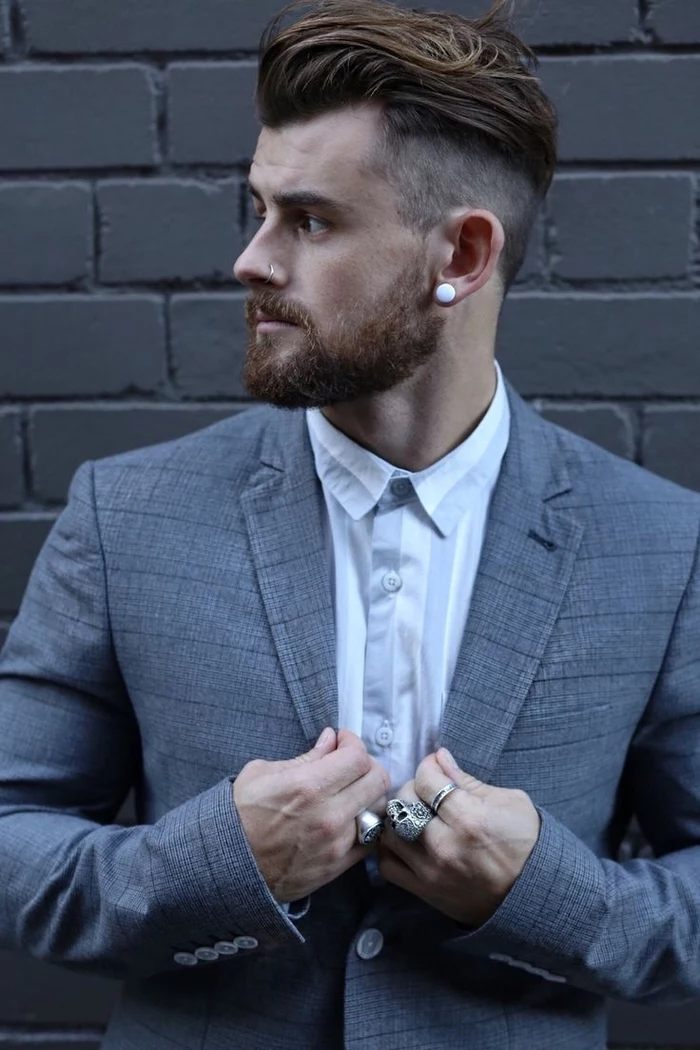
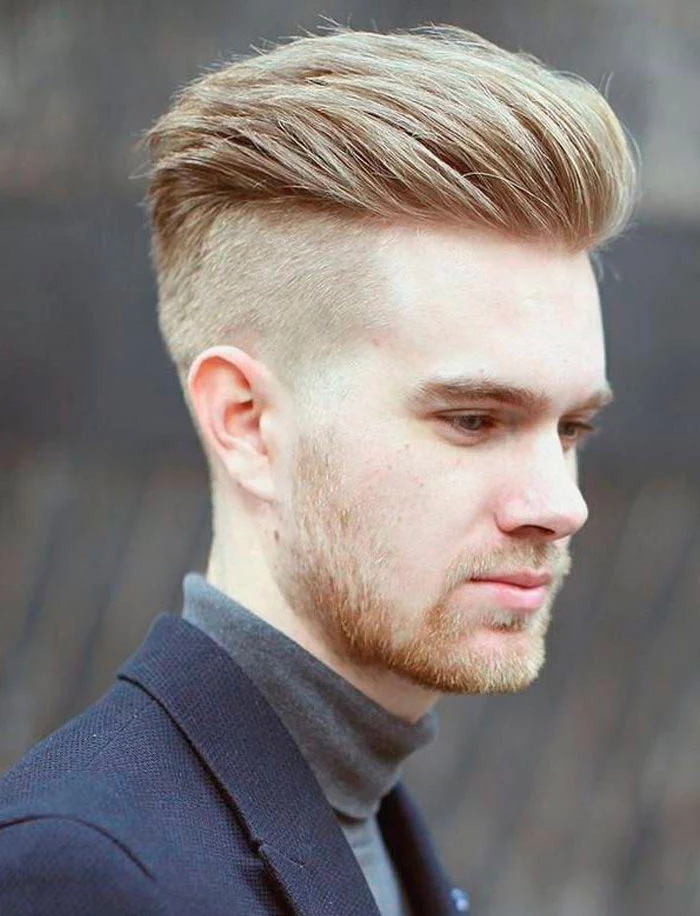
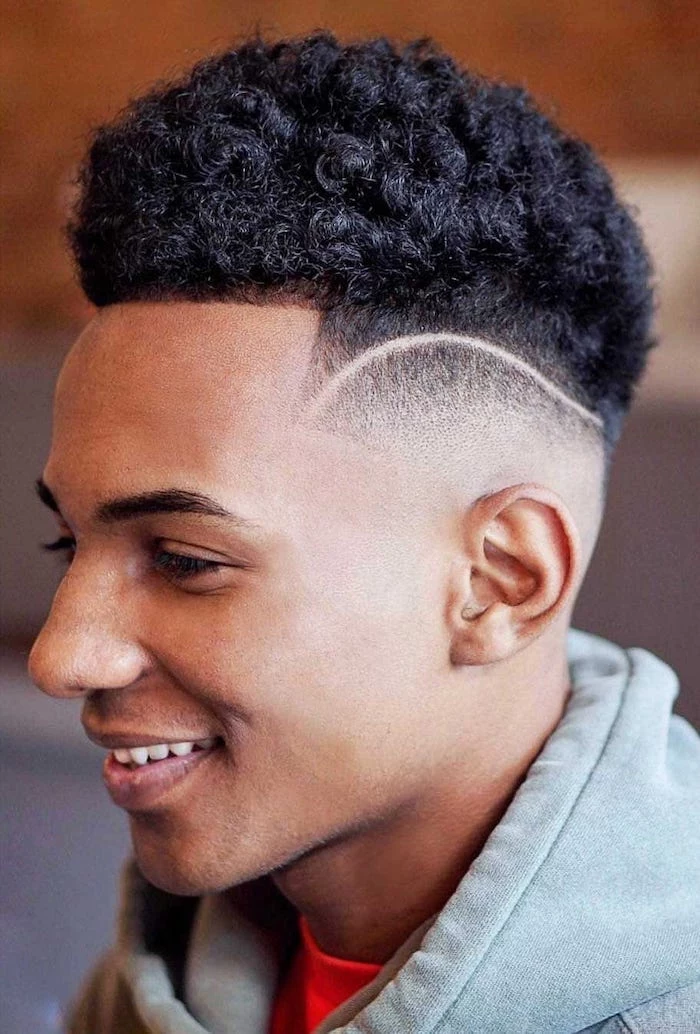
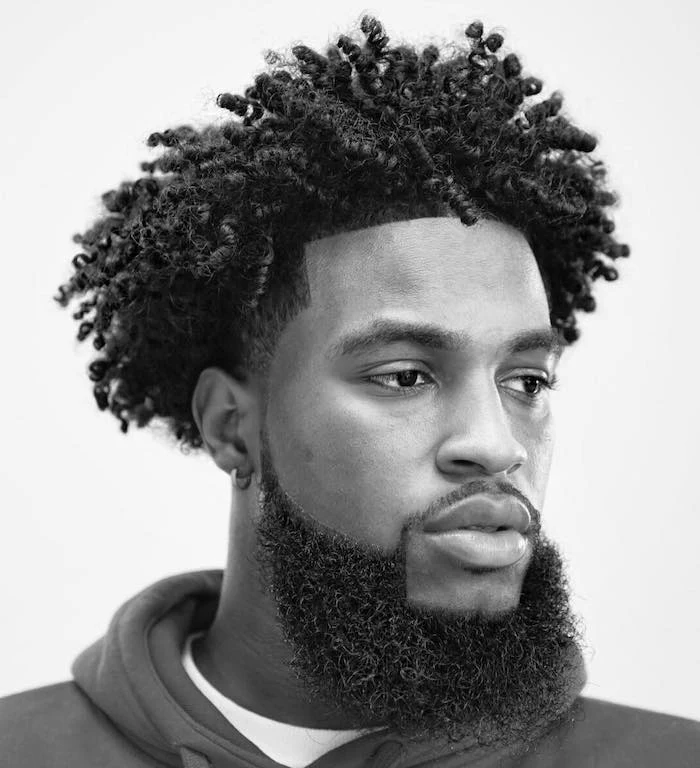
The dreaded ‘awkward stage’ of growing your hair out can be a major deterrent. But you don’t have to hide under a hat for three months. A good barber is your best ally during this phase. Schedule ‘shape-up’ appointments—not full cuts—where they can trim the neckline, tidy the edges, and add subtle layers. This maintains a deliberate shape, making the transition feel less like a mess and more like an intentional, evolving style.
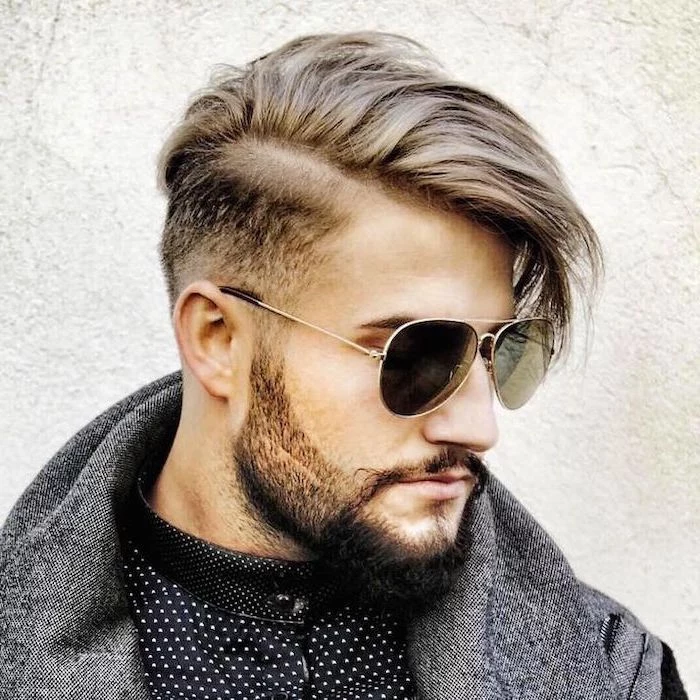
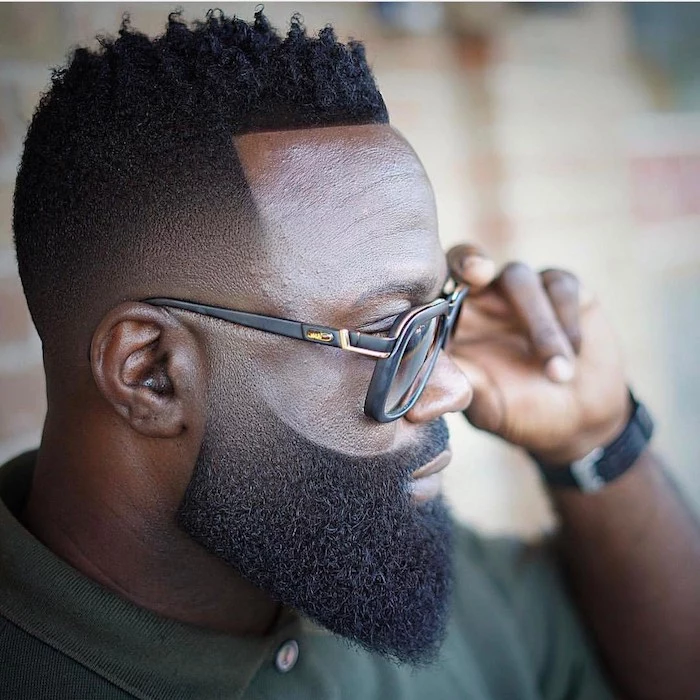
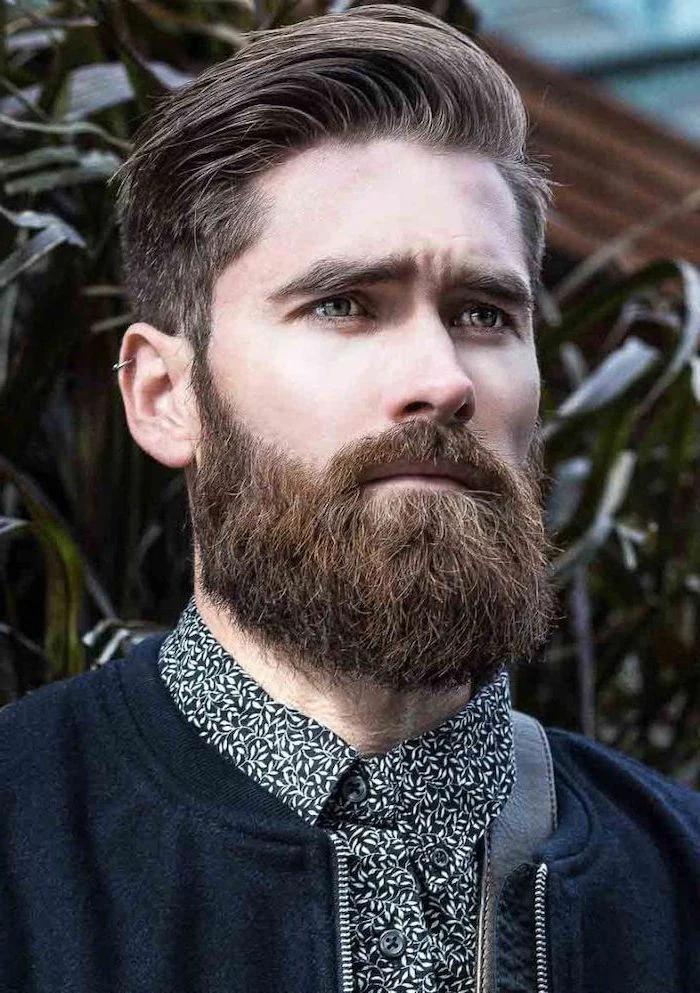
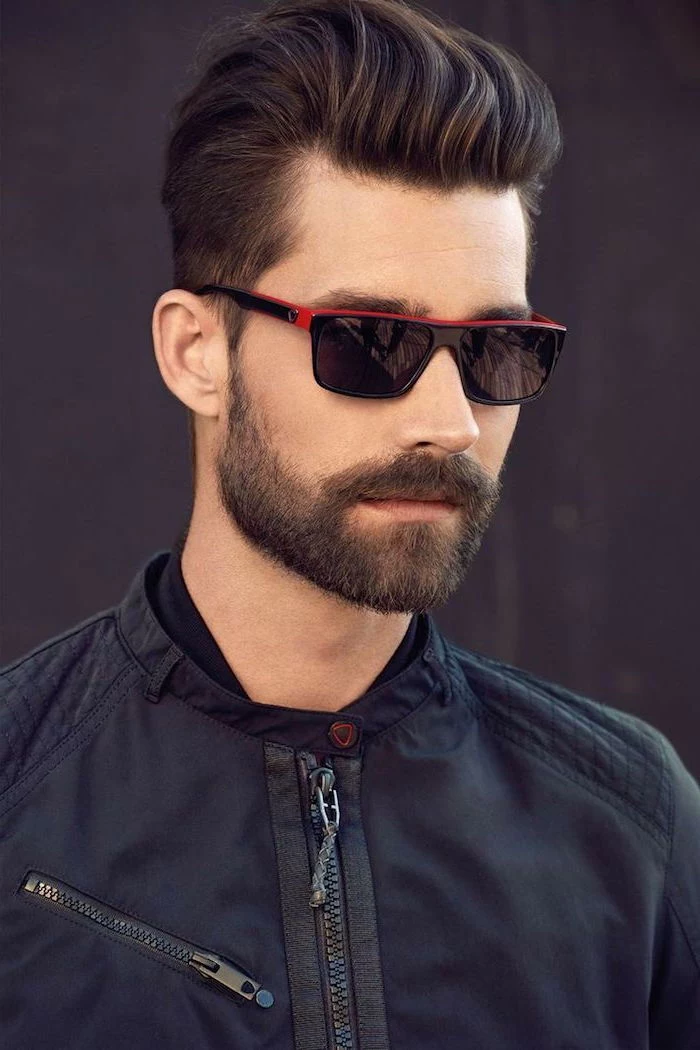
- Keeps your neckline clean and sharp.
- Makes your daily styling routine faster.
- Extends the life of your haircut by at least a week.
The secret? A pre-styler. Products like a mousse or heat-protectant spray applied to damp hair give it memory and foundation. When you blow-dry, your hair is already primed to go in the right direction, meaning you use less pomade or clay for the final look.

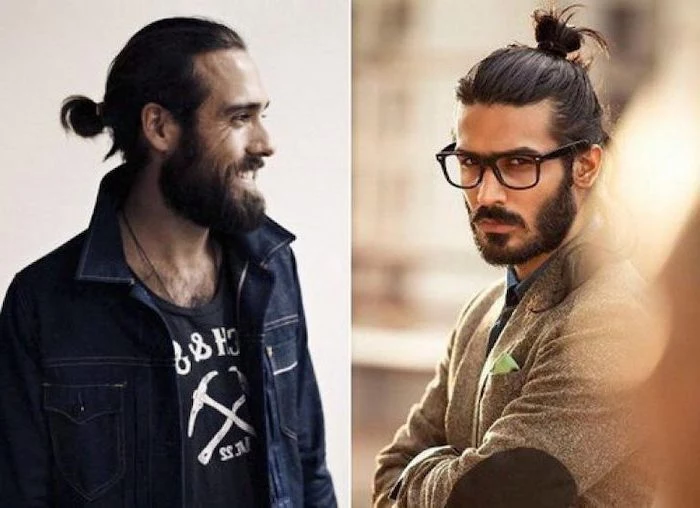

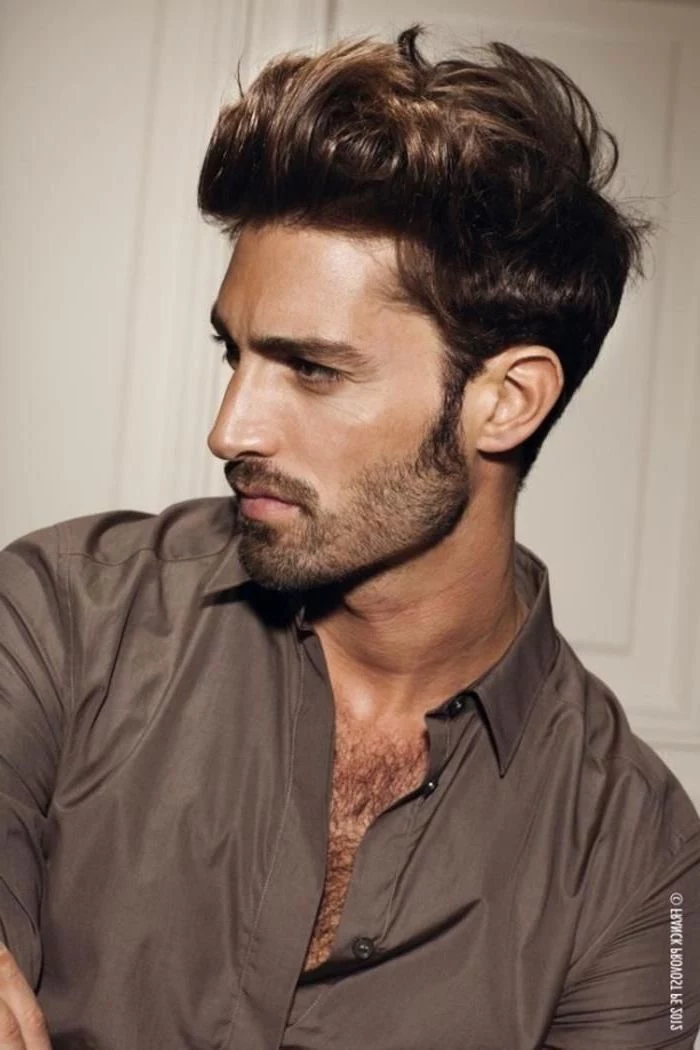
Matte Finish: Think natural, textured, and shine-free. Products like clays and some pastes absorb light, giving your hair a dry, modern look. Perfect for casual, messy styles. Hanz de Fuko’s Quicksand is a classic example.
High Shine: This is the polished, wet look associated with classic pompadours and slick-backs. Pomades and some waxes reflect light, giving a sharp, defined, and dressier appearance. Think of the timeless gloss from Reuzel’s Pink Grease Pomade.
Your choice of finish is as important as the hold itself.
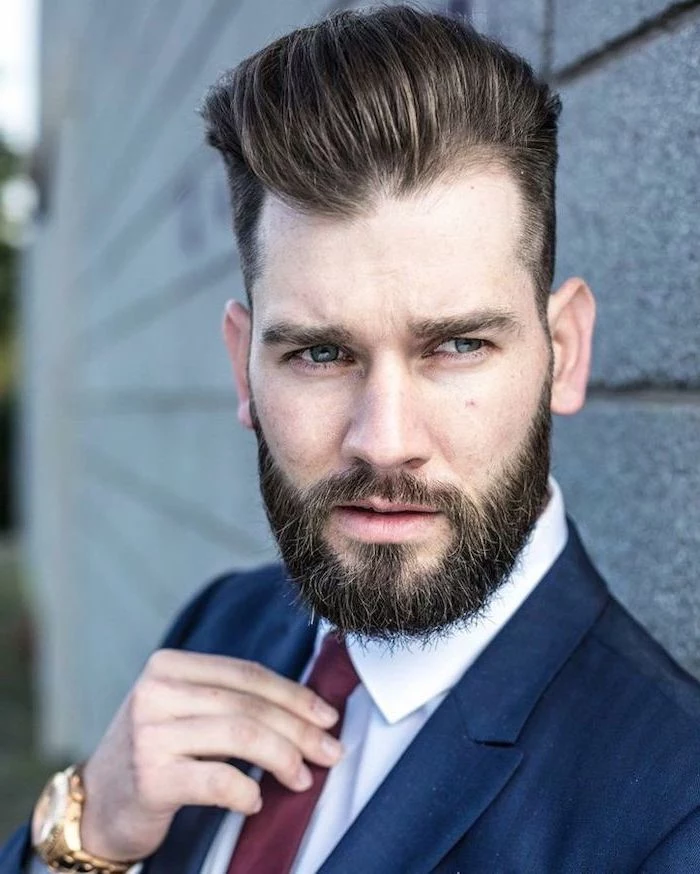

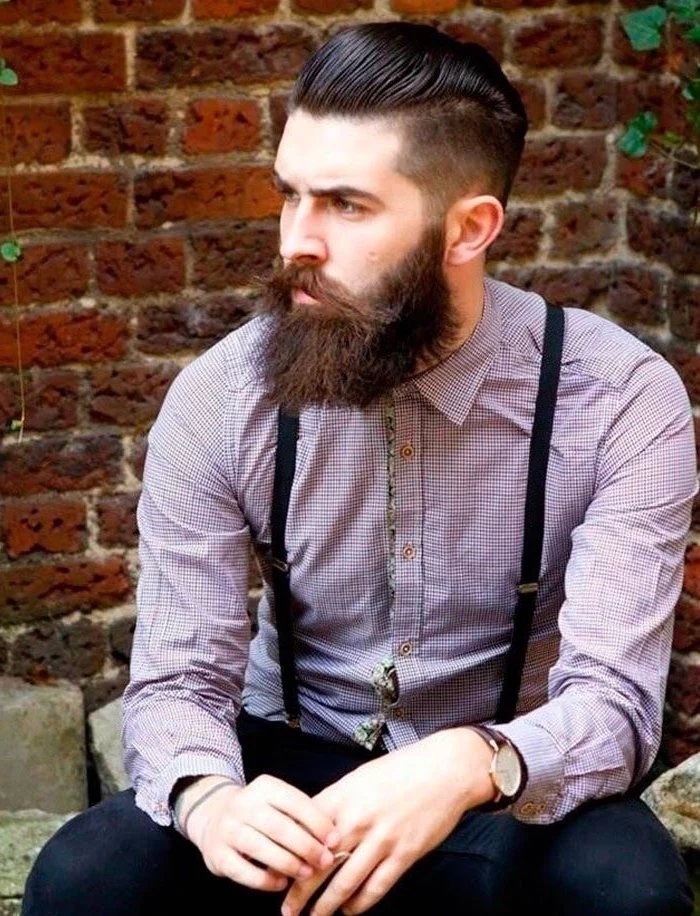
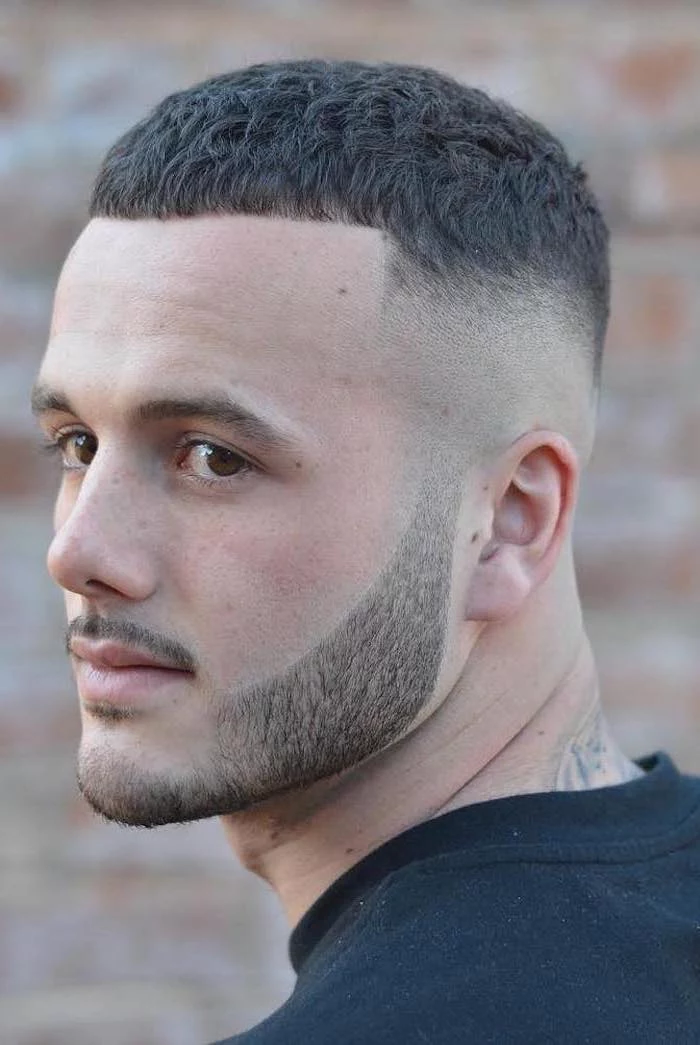
That fresh-from-the-barber feeling isn’t just about the cut; it’s about the scalp. A healthy scalp is the foundation for healthy hair. If you’re dealing with flakes or itchiness, look for a shampoo with ingredients like ketoconazole (found in Nizoral) or pyrithione zinc. Also, avoid washing with scalding hot water, which can strip natural oils and lead to dryness and irritation.
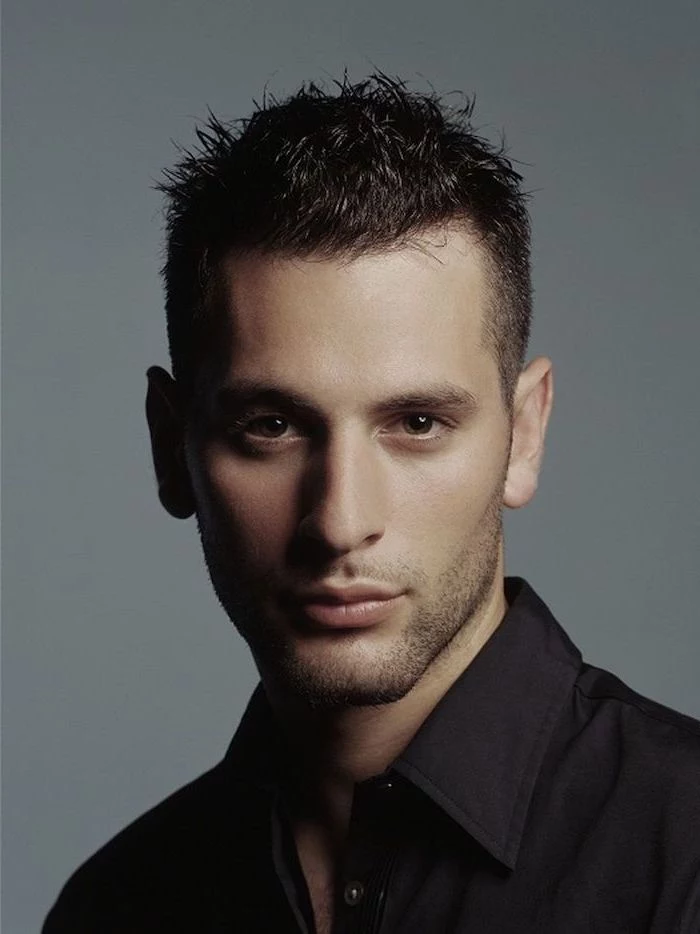
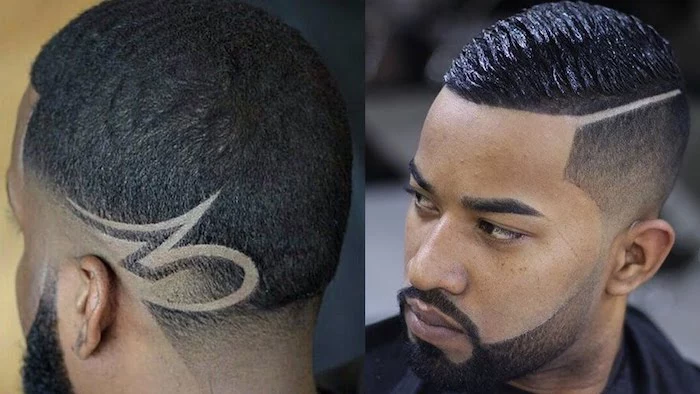
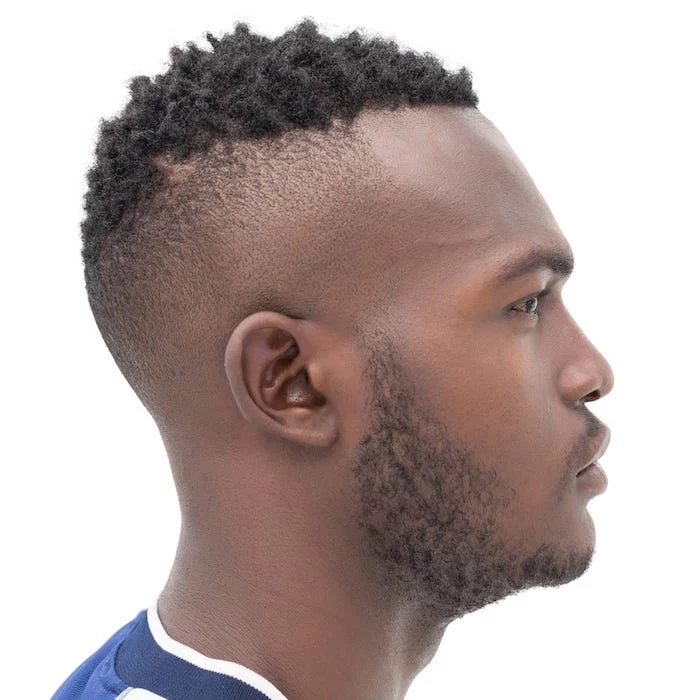

One of the most popular and versatile modern cuts is the textured crop. It’s defined by short, faded or tapered sides and a slightly longer top that’s cut and styled to create dimension and a slightly messy look. It’s low-maintenance for daily styling and works with nearly all hair types, from straight to wavy. It’s the perfect ‘get up and go’ haircut that still looks sharp and intentional.
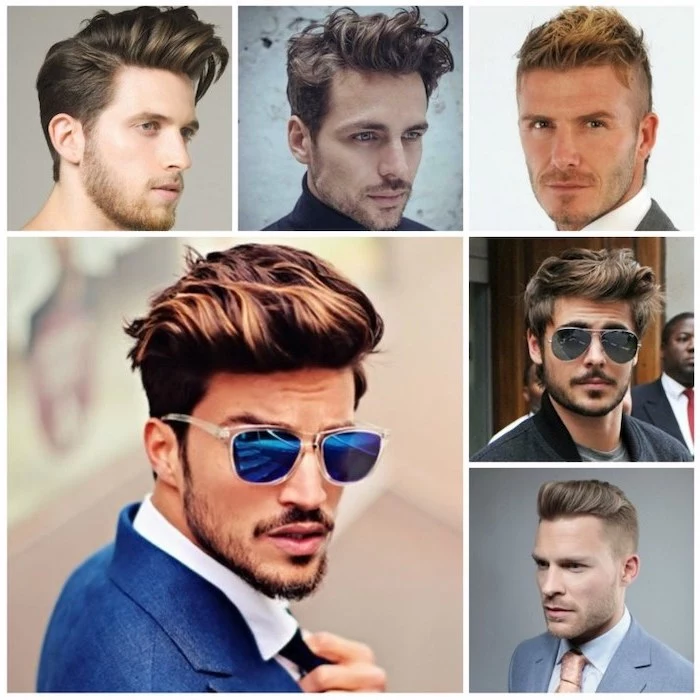
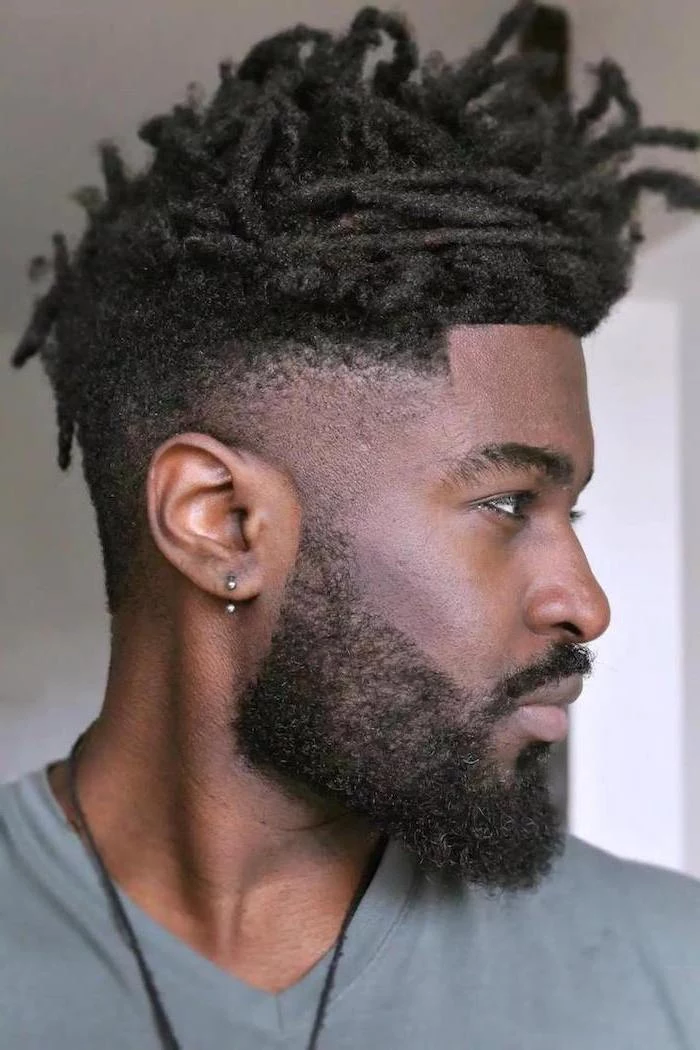
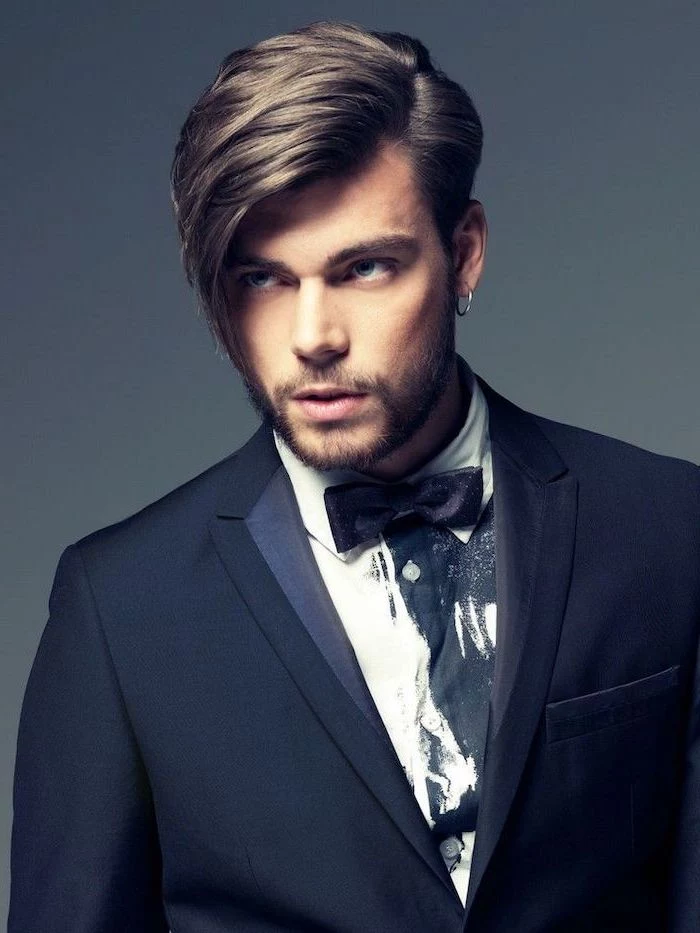
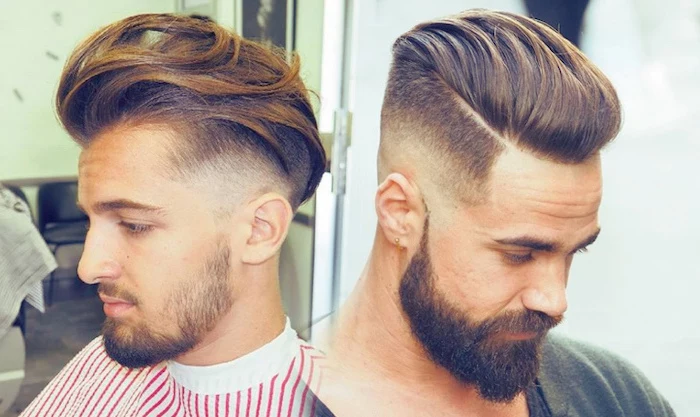
A study published in the International Journal of Trichology found that rinsing with cooler water can help seal the hair’s cuticle.
What does this mean for you? After shampooing and conditioning with warm water to clean effectively, a final quick rinse with the coldest water you can stand helps to close up the outer layer of your hair strands. This traps moisture and results in smoother, shinier hair with less frizz.
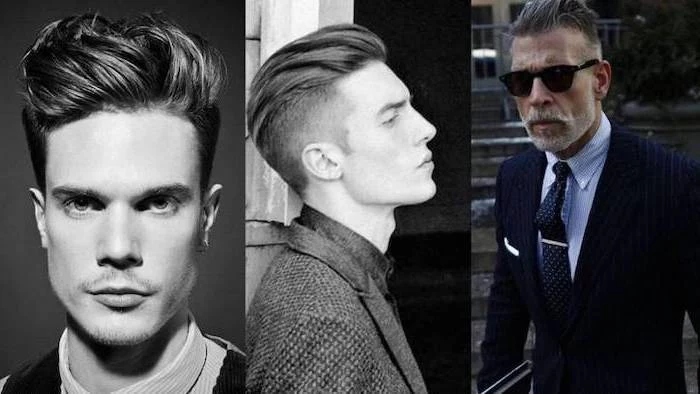

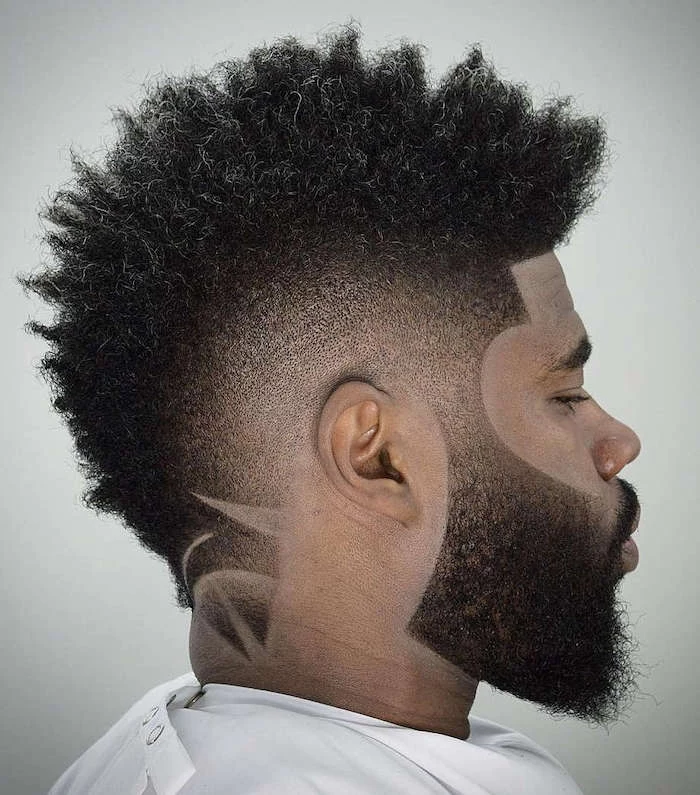
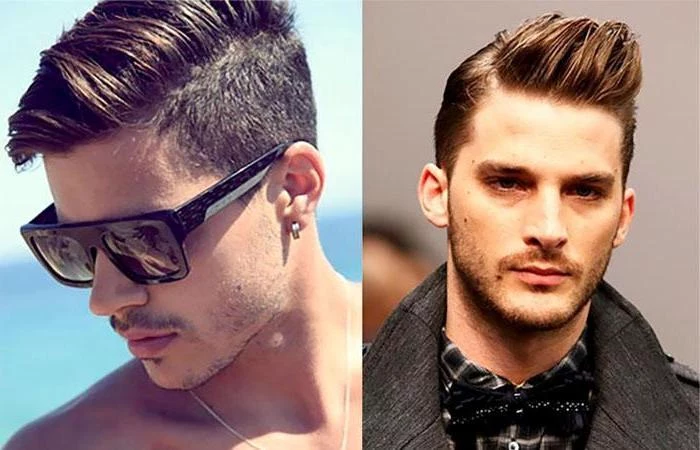
That hot towel on your face before a shave isn’t just for luxury. The steam and heat open up your pores and soften both your skin and the hair follicles. This allows for a much closer, smoother shave with significantly less irritation and fewer nicks. It’s a crucial step that transforms a routine task into a therapeutic ritual.
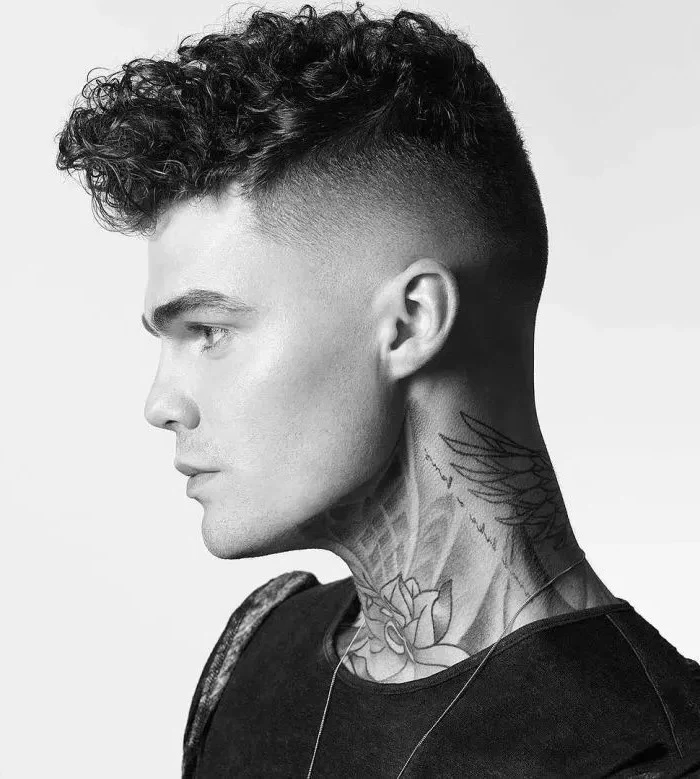
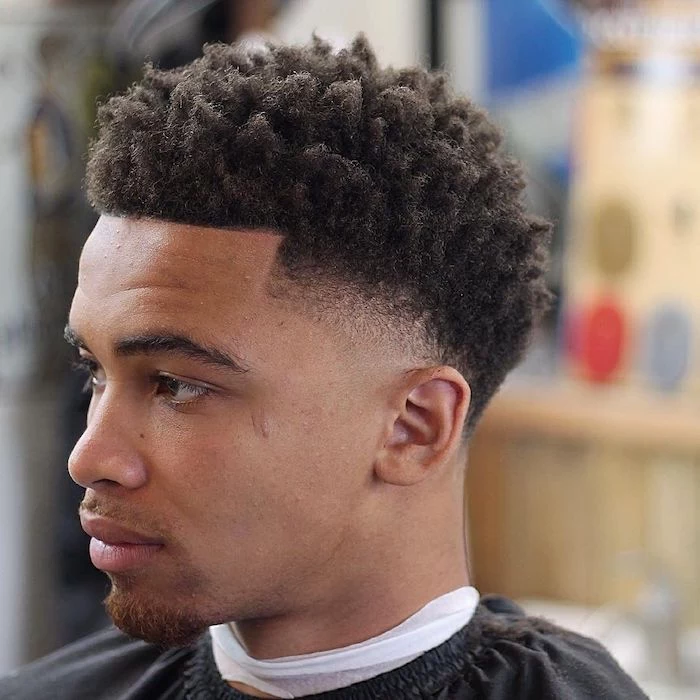
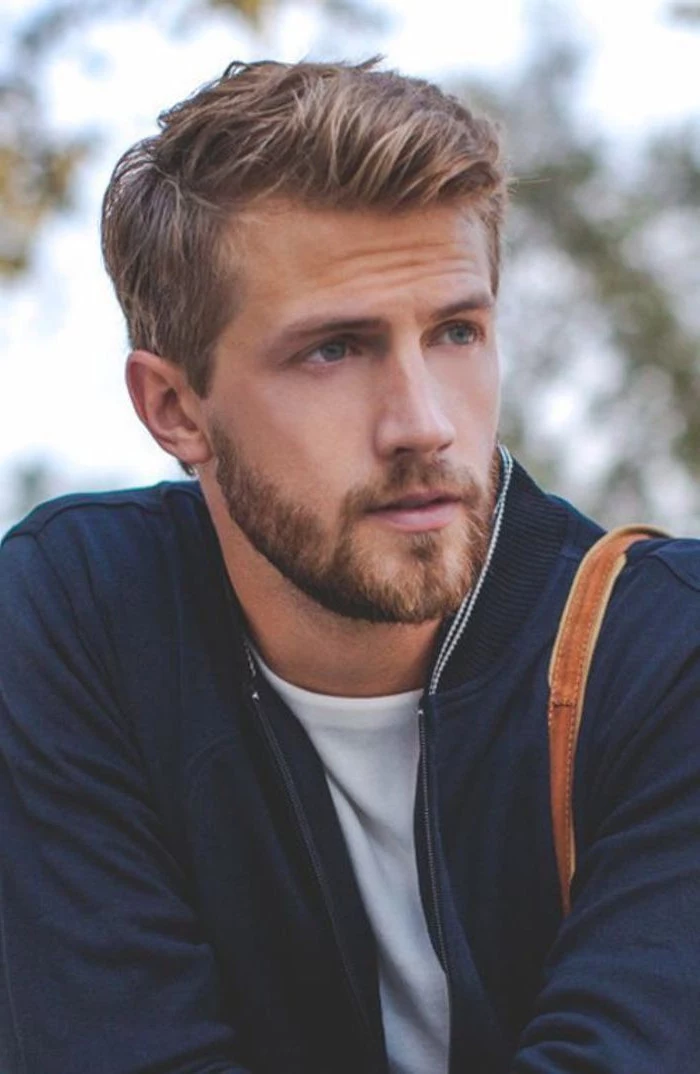
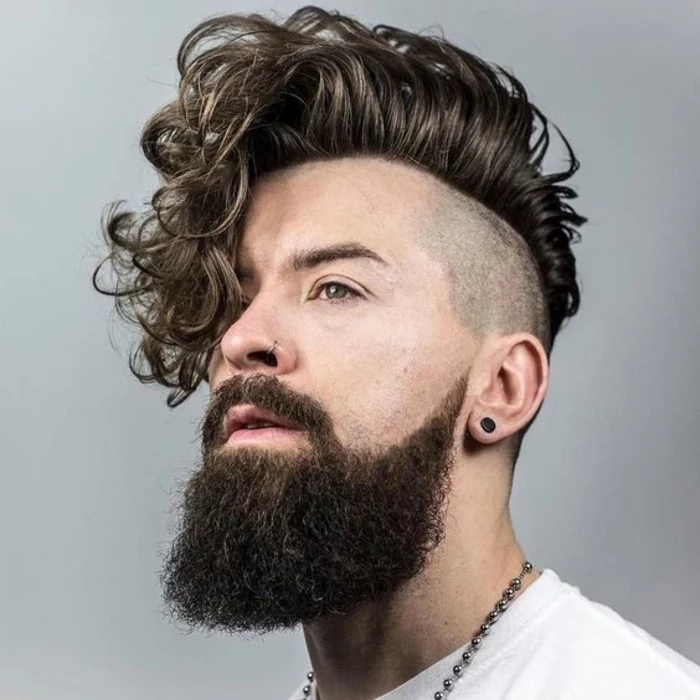
Oil-Based Pomade: This is the old-school original. It offers a strong, water-resistant hold that can be restyled throughout the day. The downside? It’s tough to wash out, often requiring a special degreasing shampoo.
Water-Based Pomade: The modern standard. It provides a similar range of holds and shines but rinses out easily with just water. Ideal for daily use without product build-up.
For most guys today, a water-based product from a brand like American Crew offers the perfect balance of performance and convenience.
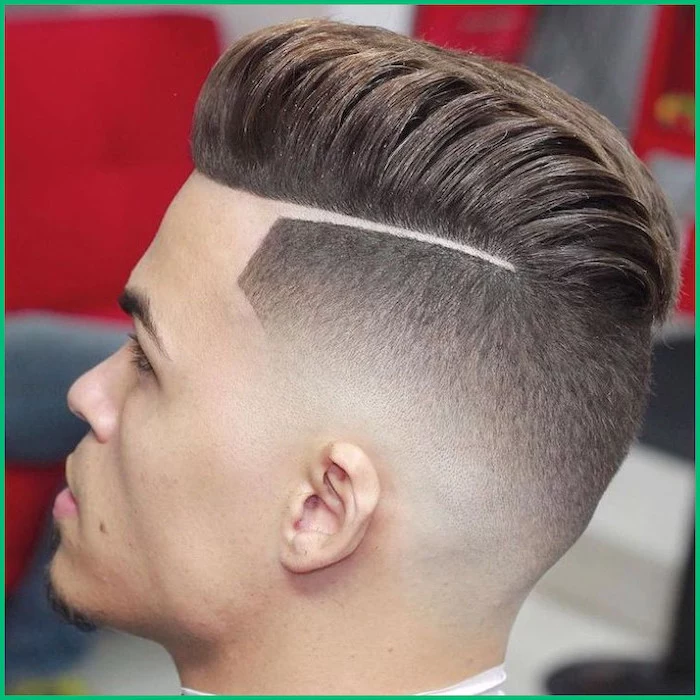
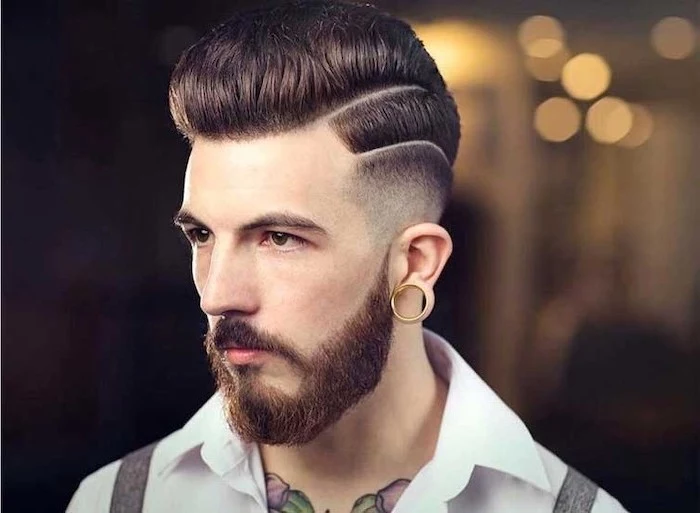
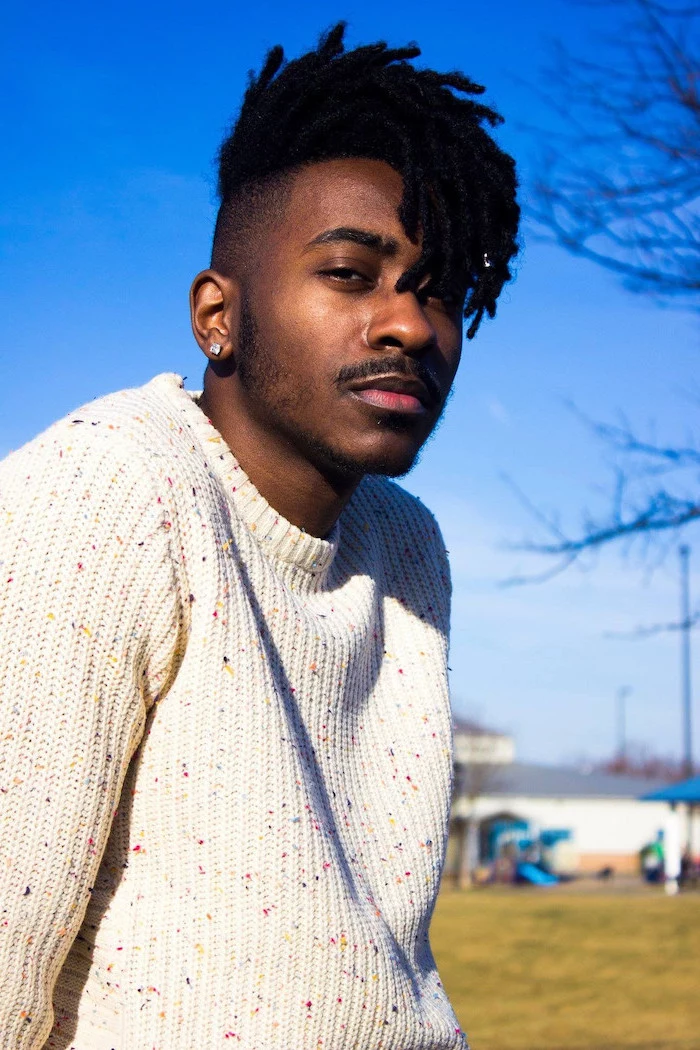
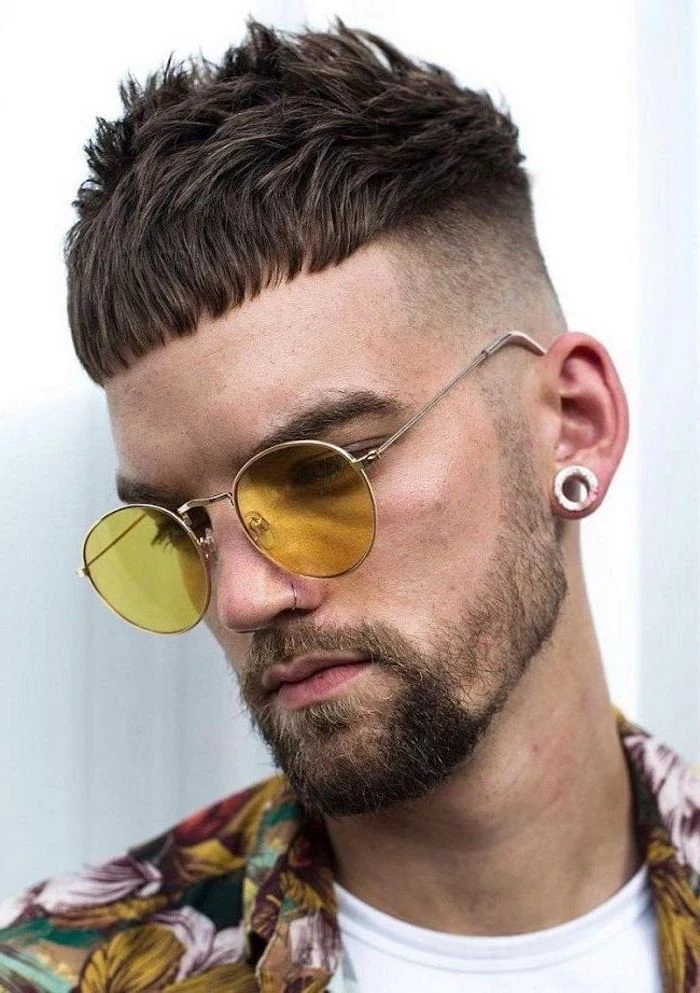
Want that fresh cut to last? A few simple habits make all the difference.
- Learn to use a blow dryer. It’s not just for women. Directing the airflow while your hair is damp tells it which way to lay, doing 80% of the styling work for you.
- Sleep on a silk or satin pillowcase. It reduces friction, meaning less bedhead and frizz come morning.
- Don’t over-wash. For most men, washing every 2-3 days is plenty and prevents stripping your scalp of its natural, healthy oils.
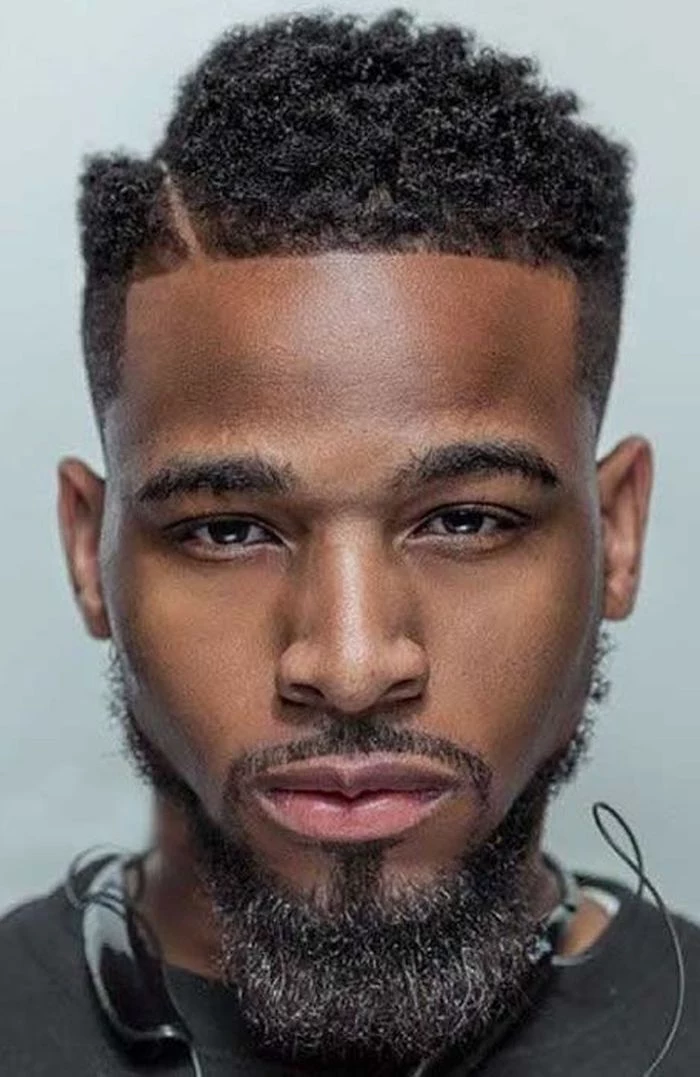
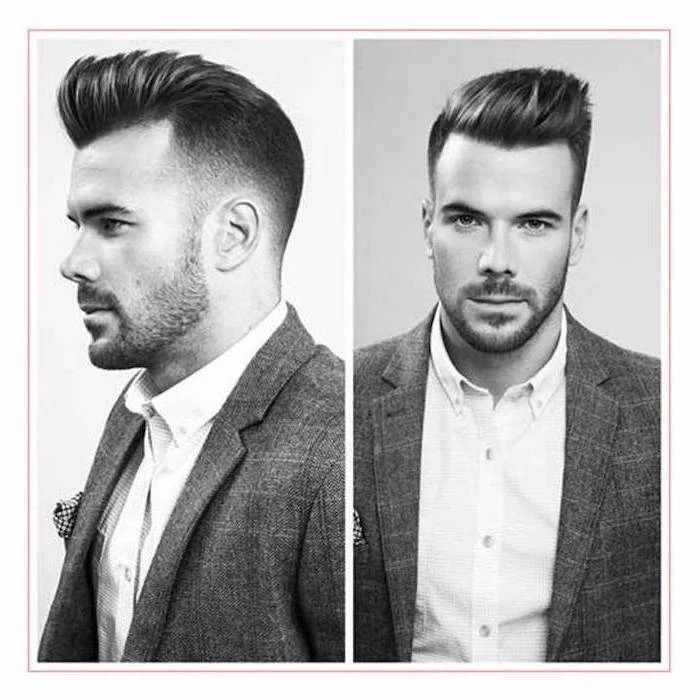
Beyond the technical skill, a great barbershop offers a unique sense of community and ritual. It’s one of the few places where conversation flows freely between strangers, the buzz of clippers provides a steady rhythm, and for 30 minutes, you can disconnect from the outside world. This experience—the hot lather, the straight-razor lineup, the final brush of powder—is as much a part of the service as the haircut itself.

